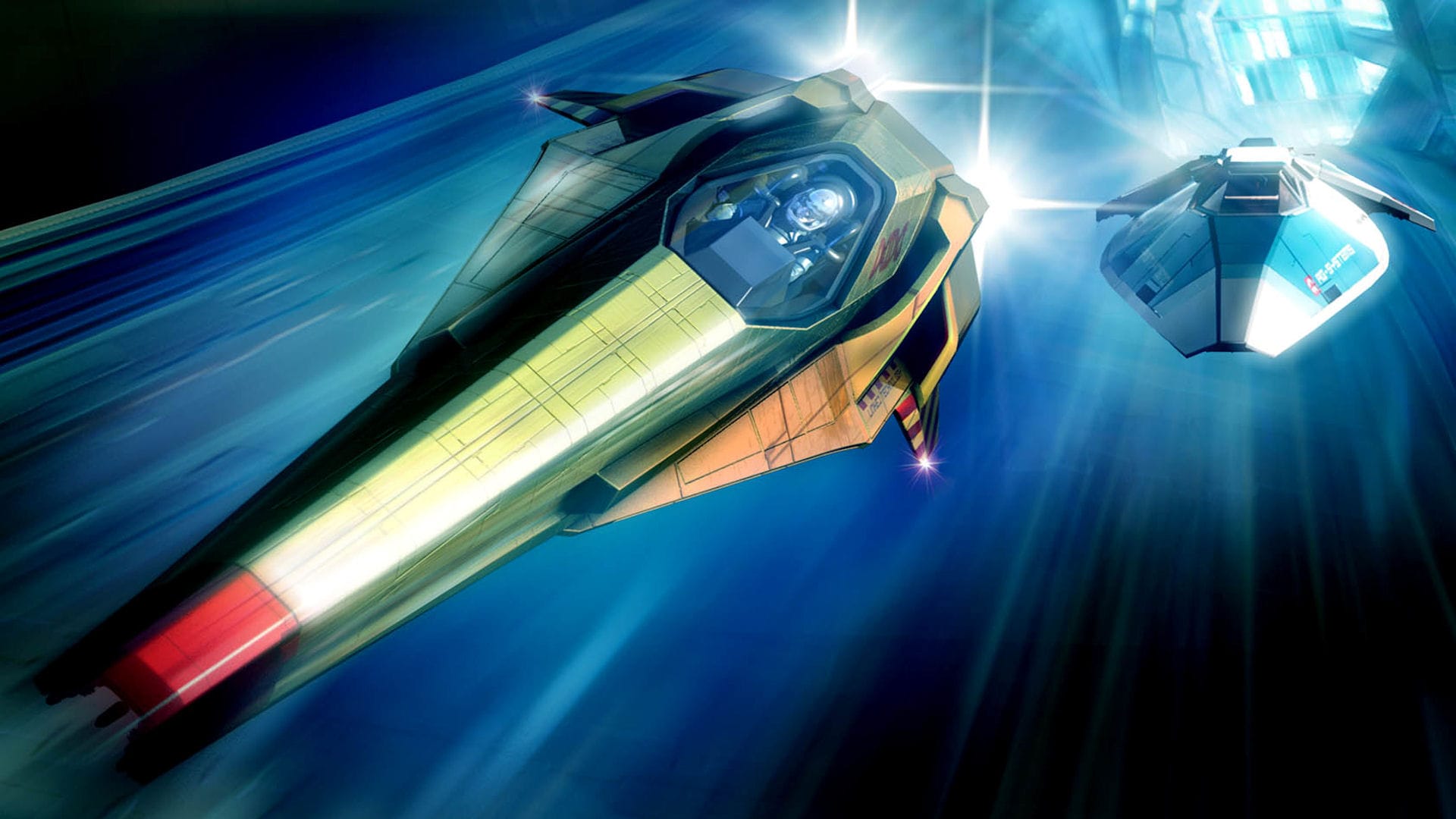There’s something magical about firing up a forgotten racing game on an old PC—or a modern one tricked out to mimic the past. Maybe it’s the janky early 3D graphics, the thumping licensed soundtracks, or the pixel-perfect sense of speed that modern titles somehow fail to replicate. Whatever it is, abandonware racing games still have plenty of gas in the tank.
These are the unsung heroes of a golden era—games that once ruled shelves and LAN parties, now left in digital limbo due to expired licenses, defunct studios, or lack of re-releases. But they haven’t been forgotten. In fact, they’re being rediscovered by a growing community of retro gamers who crave their no-frills adrenaline rush.
So buckle up. We’re taking a victory lap through 25 of the best abandonware PC racing games that prove old wheels still run smooth.
What Is Abandonware?
Abandonware refers to software—often games—that is no longer sold, supported, or maintained by its original creators. In legal terms, it’s a gray area, but in gaming culture, it’s become a lifeline to lost classics. These are the titles that fell through the cracks—left behind by licensing issues, publisher shutdowns, or a lack of digital re-releases.
For racing fans, abandonware is like stumbling onto a forgotten garage filled with pristine vintage cars. It’s a chance to rediscover games that didn’t get the spotlight they deserved—or that simply couldn’t be played anymore without some technical wizardry. Communities have stepped up to patch, mod, and optimize these old racers for modern machines, preserving their legacy and making them accessible for new generations.
The 25 Best Abandonware PC Racing Games
Digging through abandonware isn’t just an exercise in nostalgia—it’s a way to experience the raw, unfiltered charm of a time when racing games were wildly diverse, experimental, and often way ahead of their time.
Blur
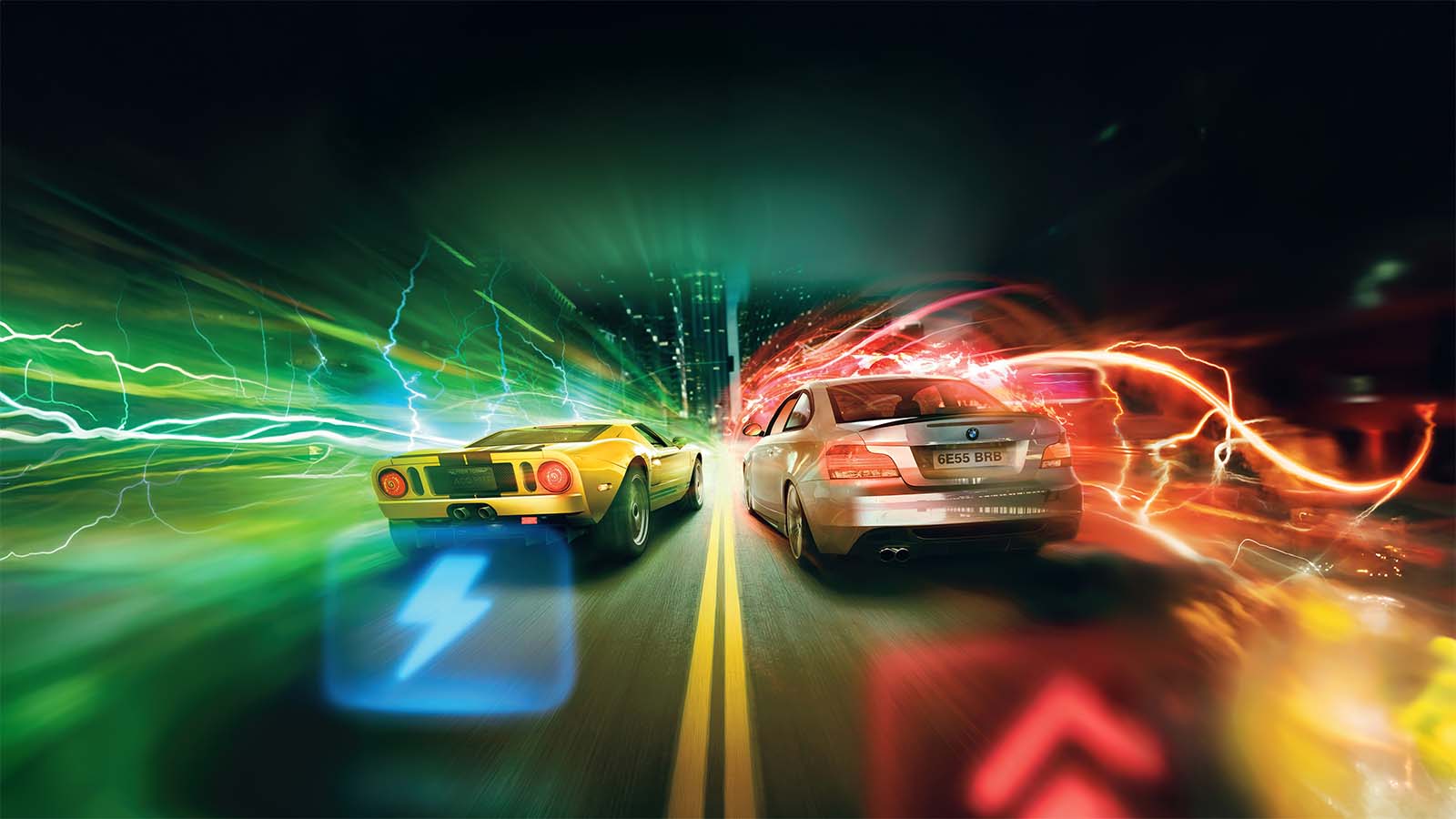
- Developer: Bizarre Creations
- Release Year: 2010
Blur was one of those rare games that dared to merge two seemingly opposing worlds: arcade-style power-ups and gritty, photo-realistic racing. Think Mario Kart, but swap out the mushrooms and banana peels for EMP blasts and shunts, and drop the action into dark, rain-slick cityscapes rendered in stunning detail. It was bold, beautiful—and criminally overlooked.
Why It's Worth Playing: Blur nailed that fine line between chaotic fun and tight driving mechanics. Every race felt like a high-stakes showdown, with a weapons system that added real strategy without compromising the thrill of the race. You weren’t just drifting through corners—you were doing it while dodging incoming lightning bolts.
Dirt 2
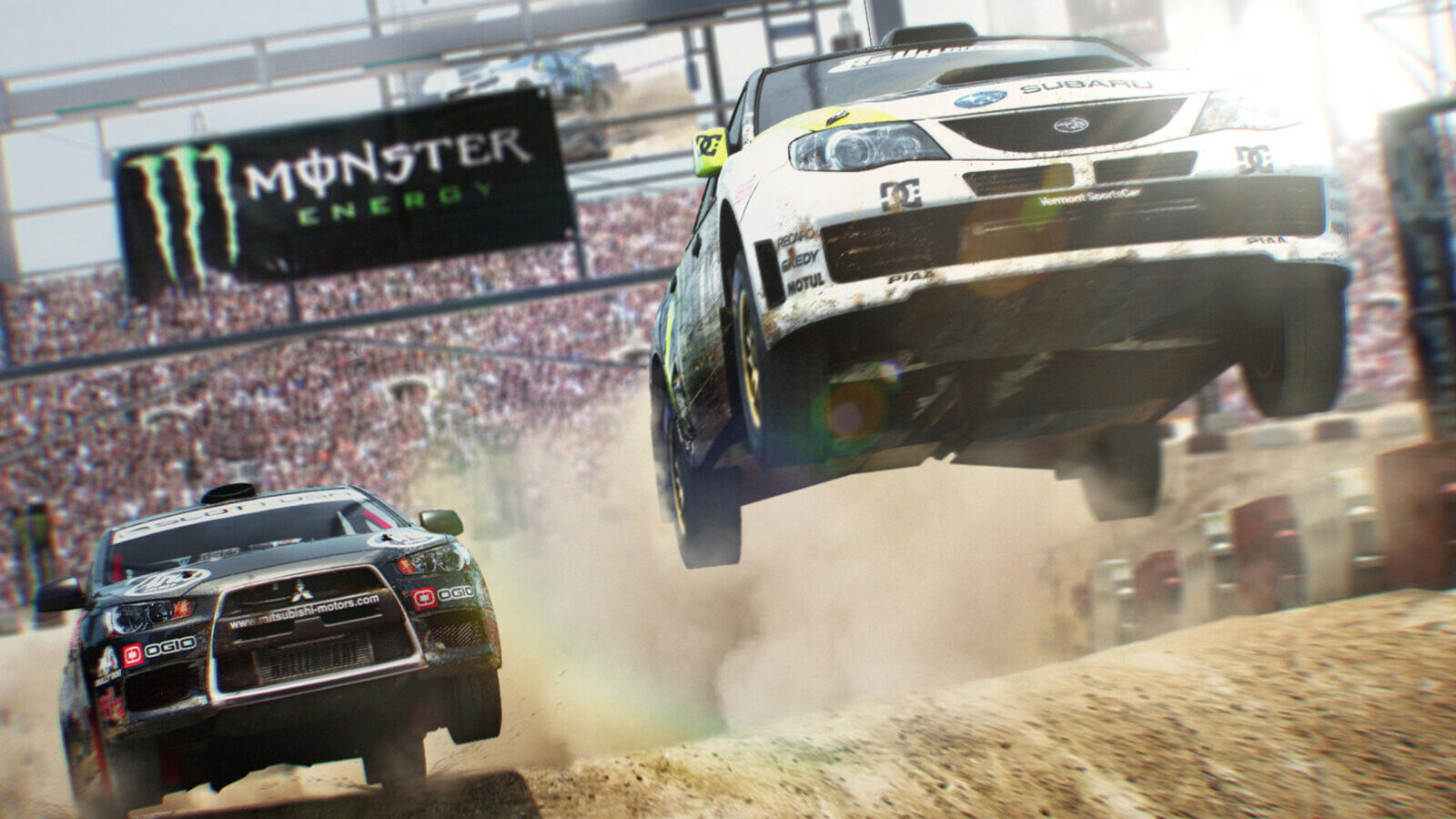
- Developer: Codemasters
- Release Year: 2009
Dirt 2 was loud, slick, and unapologetically stylish. It traded the gritty realism of Colin McRae Rally for something more vibrant and attitude-heavy. With global venues ranging from the Baja desert to the Malaysian rainforest, it was a visual feast, all wrapped up in a tight, responsive handling model that made every jump, drift, and slide feel like second nature.
Why It's Worth Playing: With a garage full of upgradeable off-road monsters, and a soundtrack loaded with the likes of The Prodigy, Yeah Yeah Yeahs, and Silversun Pickups, Dirt 2 was pure late-2000s energy. Whether you were tearing through dirt trails solo or battling friends in online rallycross, Dirt 2 made off-road racing feel like a party—even years after the dust has settled.
Test Drive Unlimited
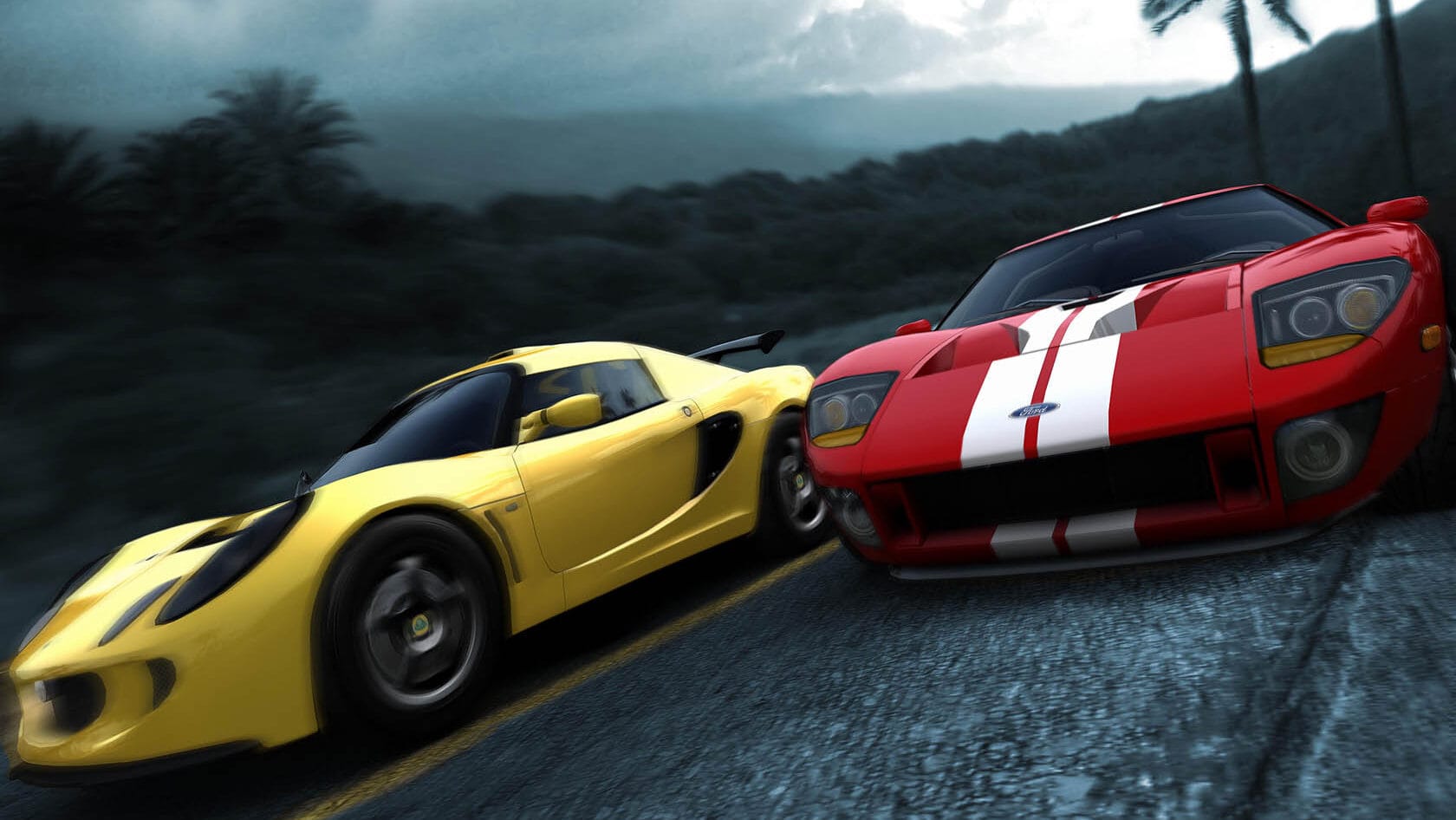
- Developer: Eden Games
- Release Year: 2007
Part racer, part lifestyle simulator, TDU was all about freedom. You could follow the career mode’s events and tournaments, or just explore over 1,000 miles of open roads. The garage was a car enthusiast’s dream, featuring exotic machines from Lamborghini, Ferrari, and Aston Martin. Combine that with dynamic weather, tuning options, and one of the most immersive cockpit views of the era, and you’ve got a game that still holds up as a landmark moment in racing game history.
Why It's Worth Playing: Test Drive Unlimited lets you live the dream: buy a luxury car, cruise past palm trees and mountain switchbacks, then pull over to shop for new clothes or real estate. It was the laid-back, sun-drenched fantasy we didn’t know we needed—and it’s still one of the most chill, endlessly replayable racers ever made.
Colin McRae: Dirt
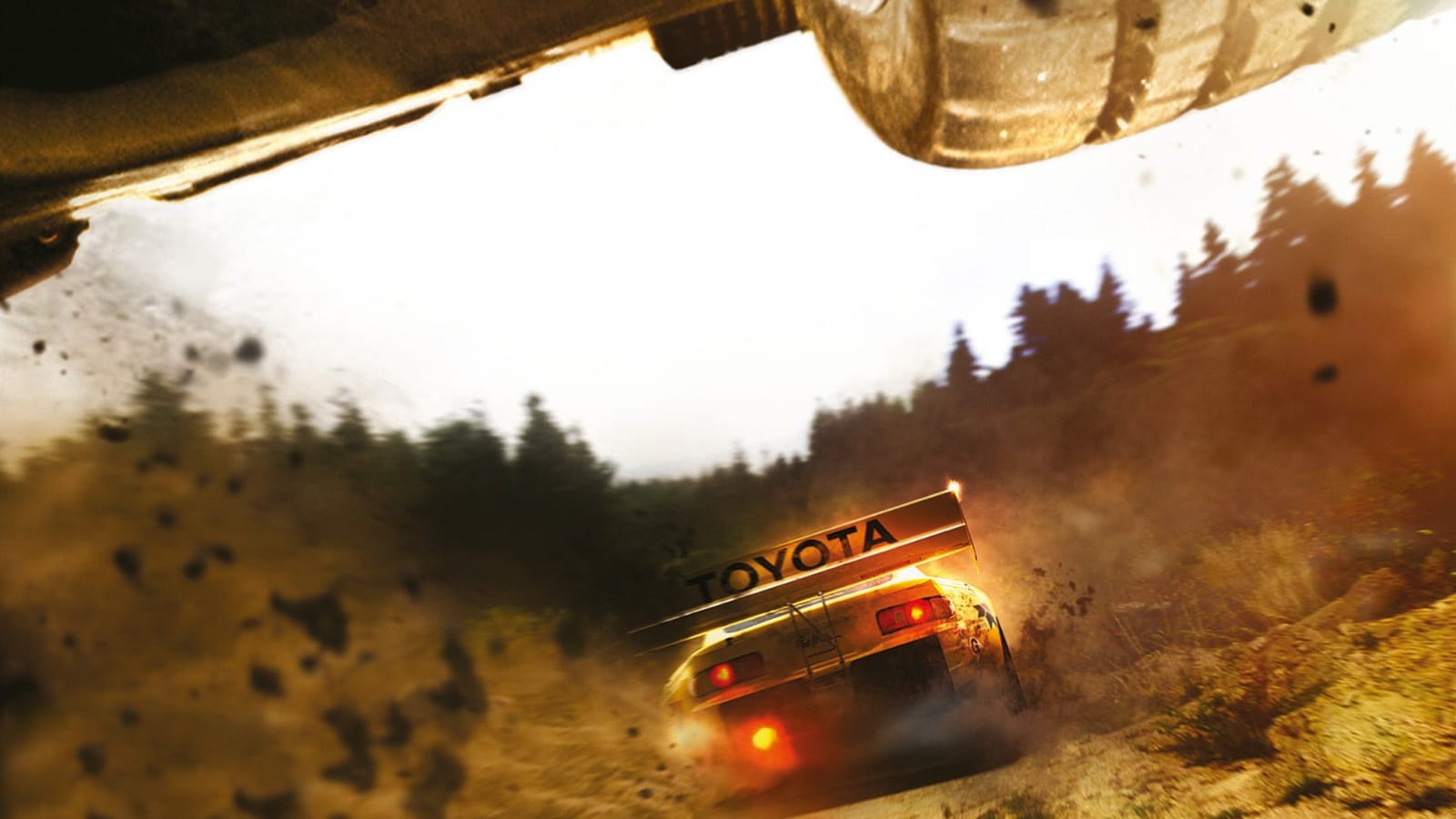
- Developer: Codemasters
- Release Year: 2007
The first entry to drop the classic “Colin McRae Rally” naming convention in favor of a snappier title, and with it came a shift in tone: Dirt wasn’t just about point-to-point rallying anymore. It expanded its scope to include rallycross, hill climbs, buggy races, and crossover duels—all under one roof. This made for a richer, more varied experience that never stayed in one gear too long. Built on Codemasters’ then-new Neon engine, Dirt was also a visual showcase for its time.
Why It's Worth Playing: With its robust career mode, gruff but iconic voiceovers from Travis Pastrana, and a soundtrack that blended perfectly with its rugged vibe, Colin McRae: Dirt stood as a gritty evolution of the franchise—a respectful tribute to McRae’s legacy and a bold leap into the future of off-road racing.
OutRun 2006: Coast 2 Coast
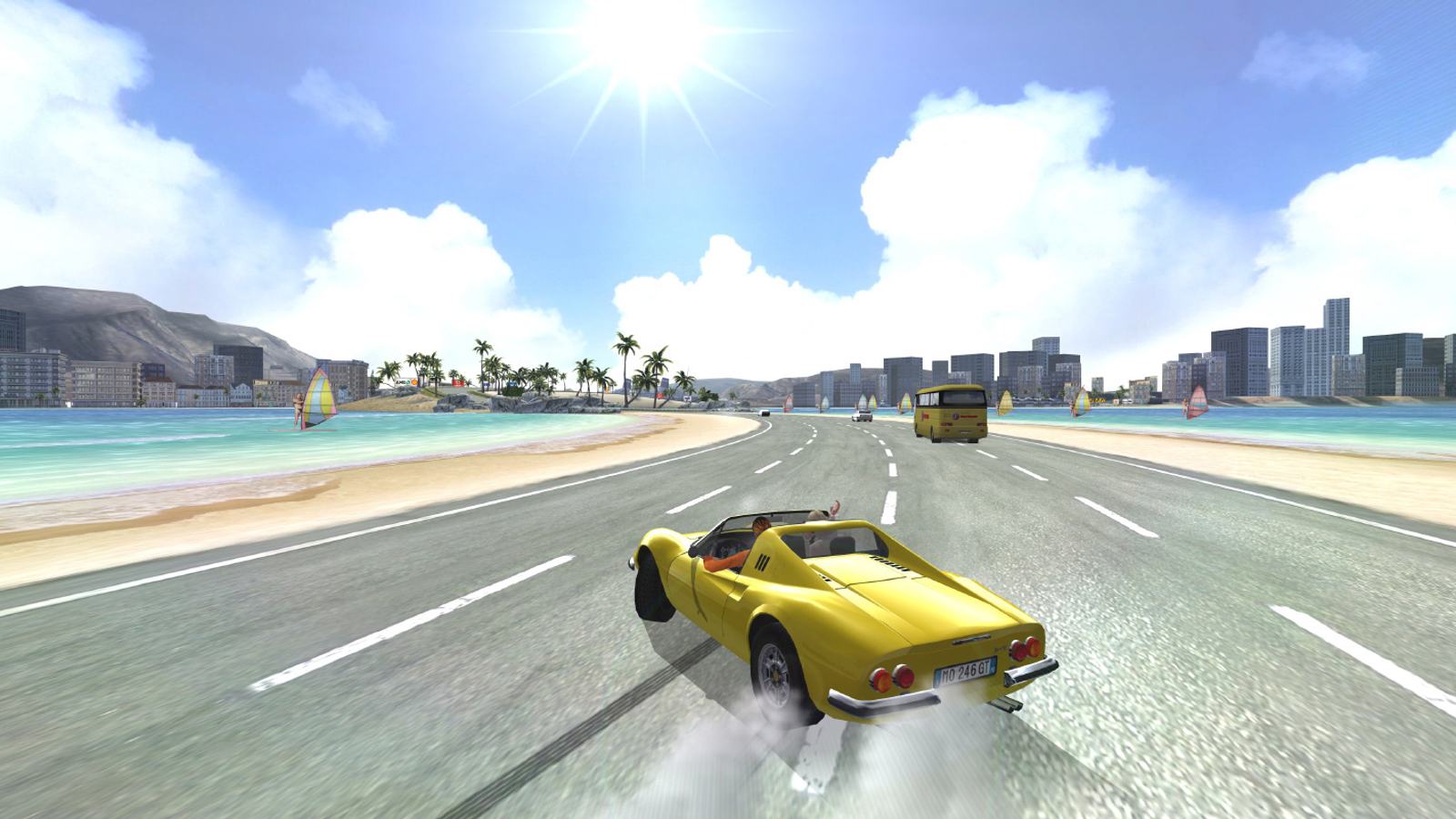
- Developer: Sega
- Release Year: 2006
OutRun 2006: Coast 2 Coast expanded on the original OutRun 2 formula by adding new modes like “Heart Attack,” where you completed drifting challenges and lane switches to impress your in-game date, and a full-fledged mission structure with dozens of events. Behind the wheel of licensed Ferraris, you tore across branching, postcard-perfect highways at blistering speeds. You weren’t racing for pink slips or prestige—you were racing for the sheer thrill of the drive.
Why It's Worth Playing: OutRun 2006: Coast 2 Coast was a throwback to Sega’s golden age of arcade racing, modernized just enough to shine on PC and console screens without losing its sun-soaked soul. This was OutRun at its peak: fast, flirty, and infused with that unmistakable sense of joy that only Sega could deliver.
TOCA Race Driver 3
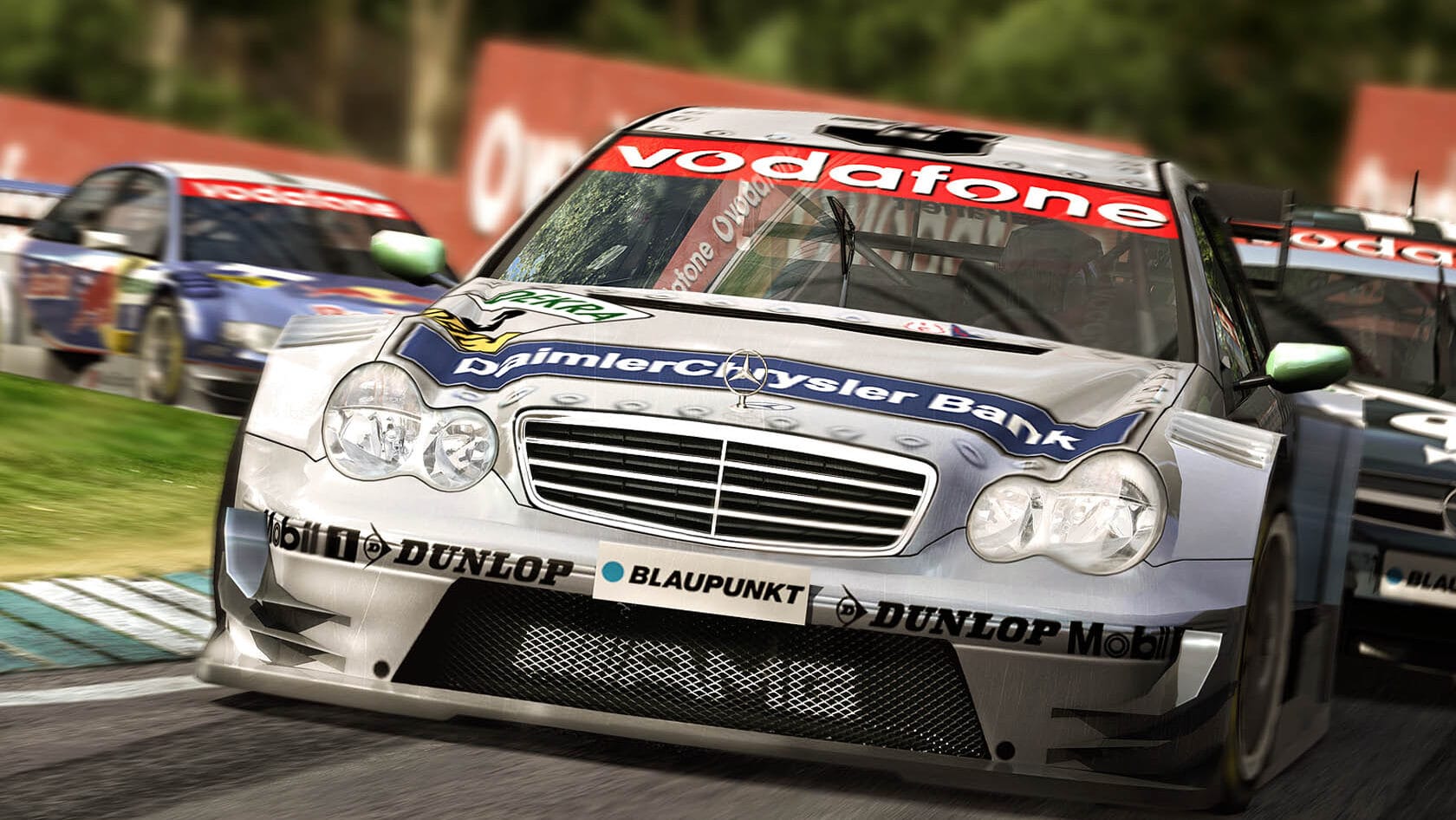
- Developer: Codemasters
- Release Year: 2006
The beauty of TOCA 3 was its dual-career structure: the “Pro Career” offered a deep, discipline-specific climb through various motorsport ladders, while the “World Tour” mode lets you bounce between racing styles in a globe-trotting sampler of high-octane events. Under the hood was a seriously impressive physics engine, capable of sim-level realism with all the nuance and unpredictability that comes with it.
Why It's Worth Playing: TOCA Race Driver 3 was Codemasters at their most ambitious—offering a ridiculously stacked package that catered to both petrolhead purists and casual racing fans alike. If it had wheels and an engine, chances are you could race it here. From Formula 1 and V8 Supercars to monster trucks and go-karts, TOCA 3 stood as one of the most complete and versatile racing sims of its time.
Need For Speed: Most Wanted
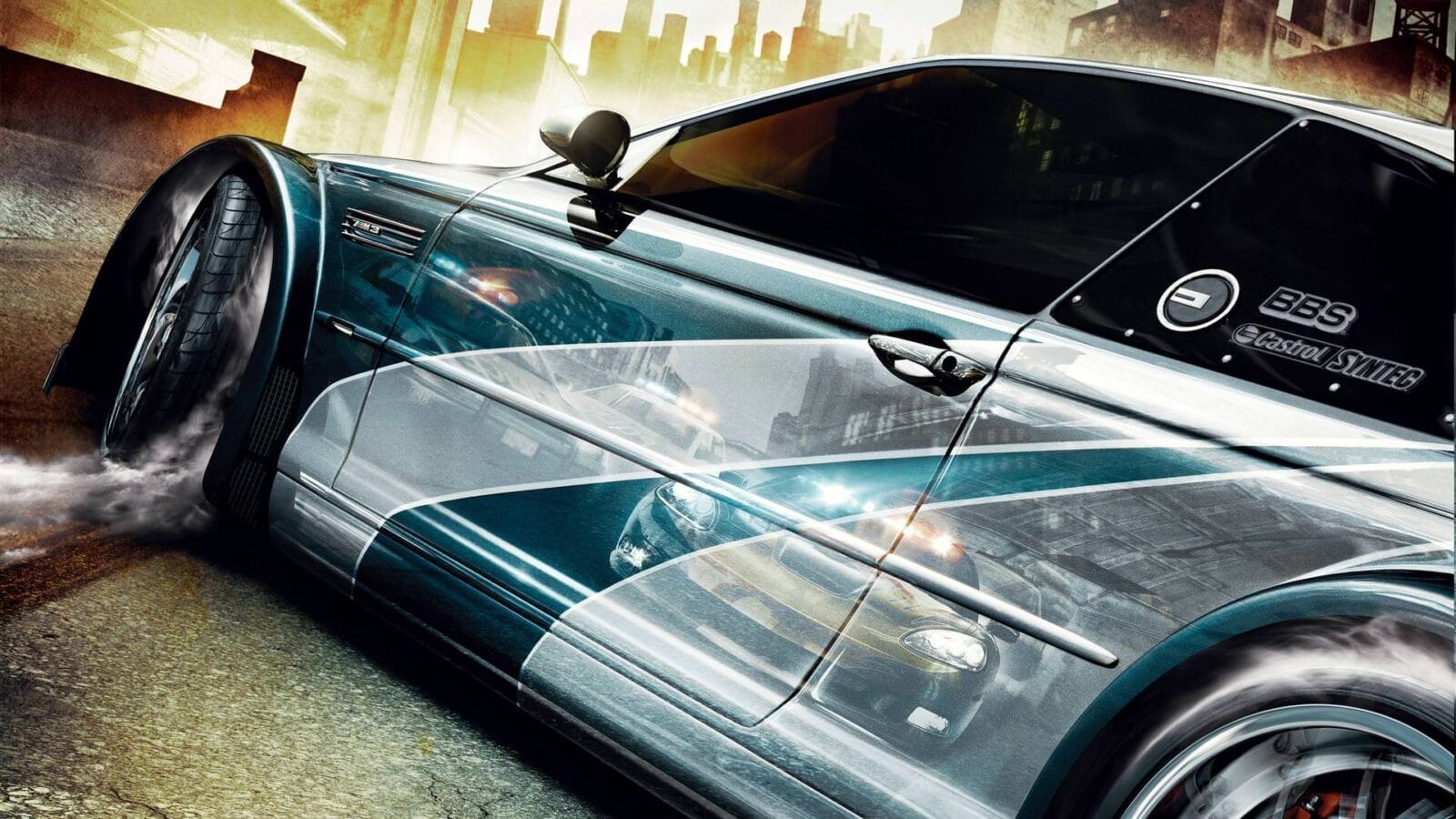
- Developers: EA Canada, EA Black Box
- Release Year: 2005
Dropping you into the gritty streets of Rockport City, Need For Speed: Most Wanted masterfully blended street racing bravado with slick car customization, dramatic slow-mo crashes, a thumping soundtrack, and an open world filled with shortcuts, jumps, and speed traps. But what truly set Most Wanted apart was the intensity of its cops. These weren’t just background annoyances—they were aggressive, tactical, and relentless, escalating from basic patrols to full-blown roadblocks and spike strips.
Why It's Worth Playing: While later entries chased flashier aesthetics or deeper sim mechanics, Most Wanted struck the perfect balance between arcade chaos and tuner cool. It was fast, furious, and full of attitude—NFS at its absolute best. Need For Speed: Most Wanted isn’t just one of the best entries in the NFS franchise—it’s a defining moment in 2000s racing culture.
Juiced
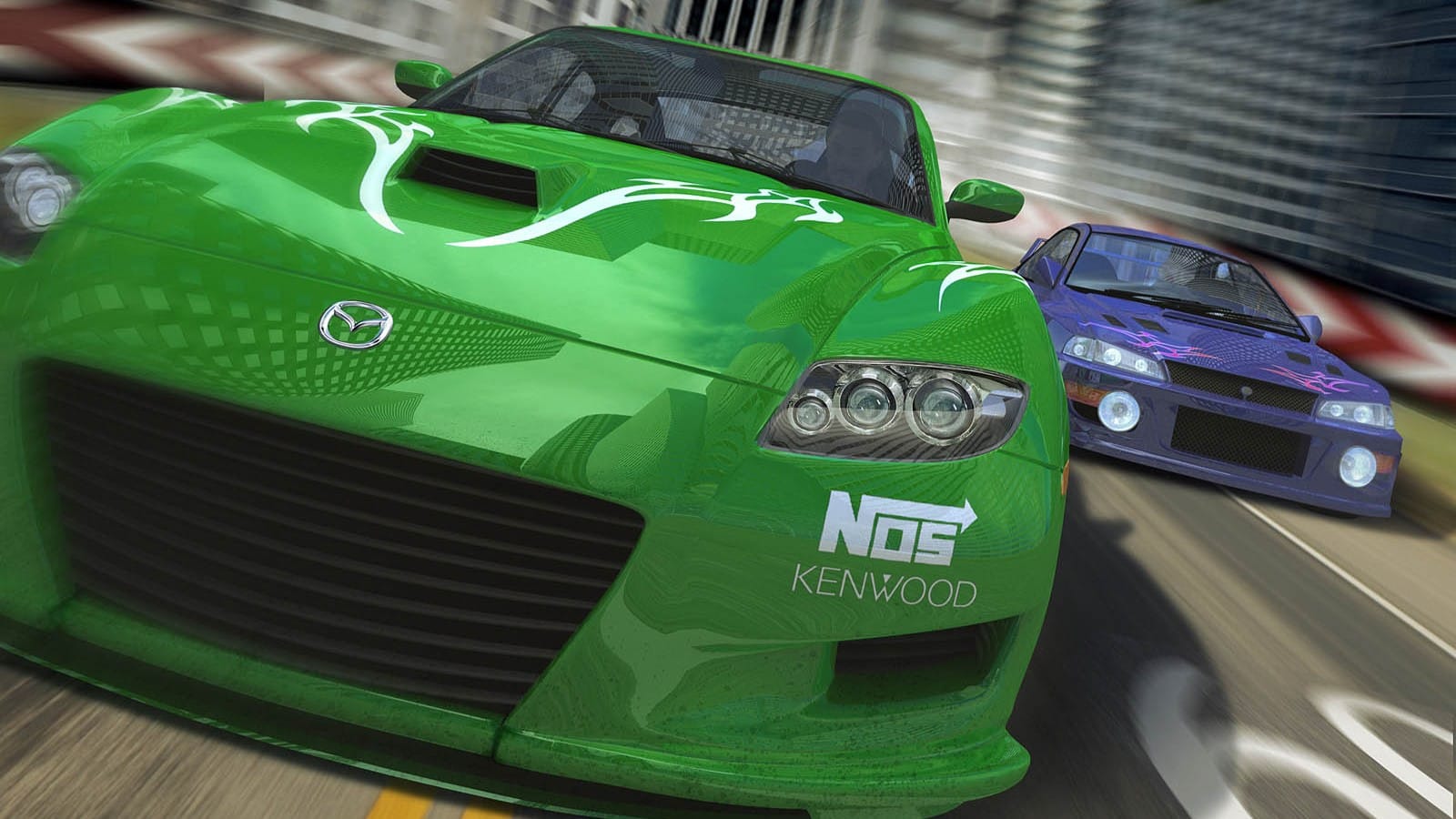
- Developer: THQ
- Release Year: 2005
In the mid-2000s, street racing games were everywhere—but what set Juiced apart was its unique respect and reputation system. Winning races wasn’t just about crossing the finish line first—it was about how you raced. Drive clean, take calculated risks, and earn the respect of rival crews. Mess up, and you might lose more than just the race—you could lose your car in a high-stakes pink slip showdown.
Why It's Worth Playing: Though it flew under the radar compared to Need for Speed or Midnight Club, Juiced offered a grittier, more grounded take on underground racing—and its mix of style, substance, and street-smart strategy still holds up for those looking for something a little more deliberate in their drive.
Richard Burns Rally

- Developer: Warthog Games
- Release Year: 2005
Named after the late 2001 World Rally Champion, Richard Burns Rally was designed with input from Richard Burns himself and aimed squarely at purists. Forget rewind buttons or arcade physics—this was a world where one wrong move on a gravel hairpin could end your stage in a ditch. The cars felt weighty, the surfaces unpredictable, and the co-driver’s pace notes? Absolutely essential. Because of this, RBR earned a reputation as one of the most demanding and rewarding racing experiences ever put on a disc.
Why It's Worth Playing: If you want rally racing stripped to its core—no fluff, no shortcuts, just you, the road, and the relentless pursuit of perfection—Richard Burns Rally is still the undisputed benchmark. It’s brutal. It’s brilliant. And it’s never been better than it is today.
Need For Speed: Underground 2
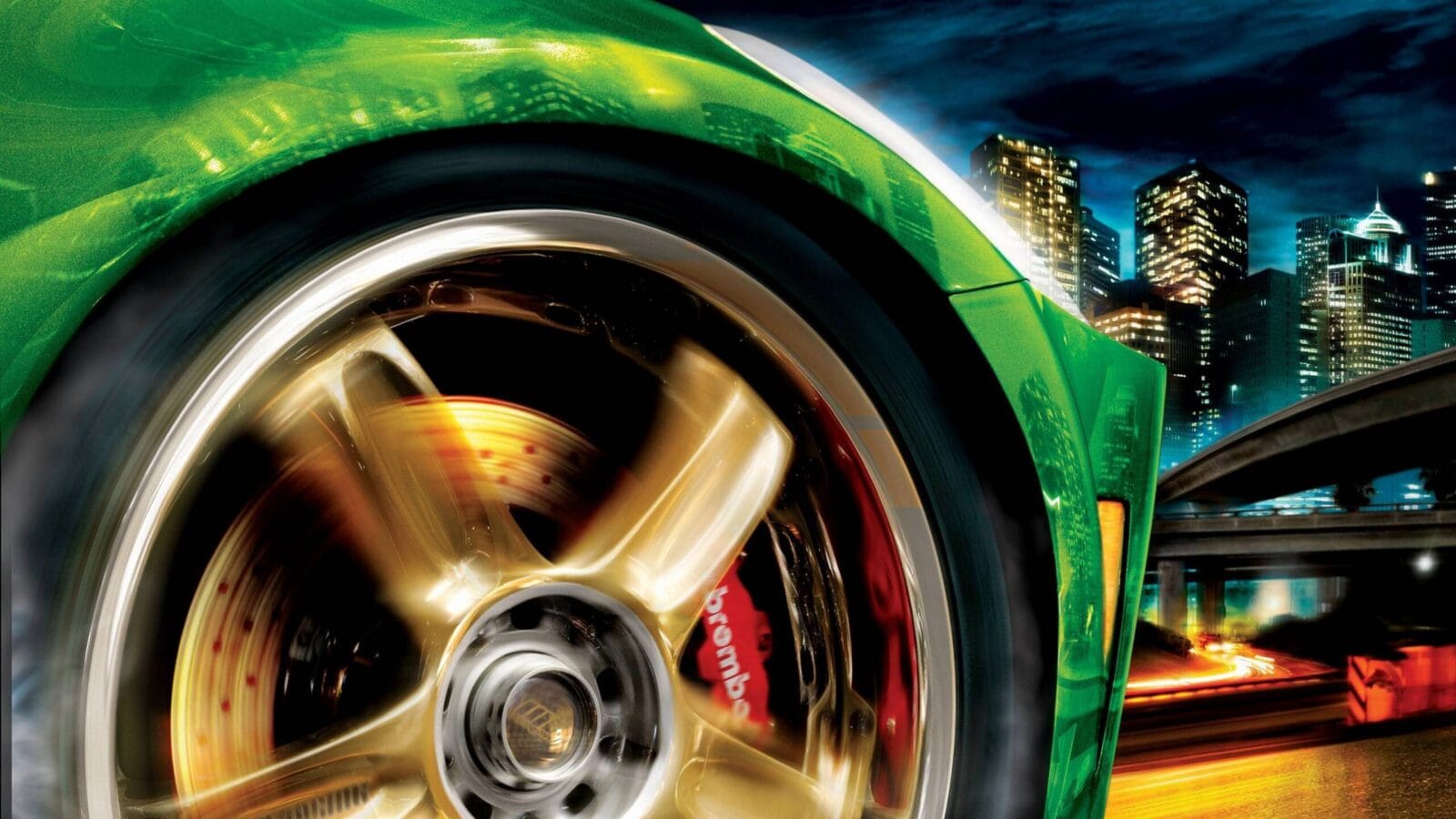
- Developer: EA Black Box
- Release Year: 2004
Set in the fictional city of Bayview, Underground 2 let you roam freely for the first time in the series, discovering races, shops, and secrets across urban highways, mountain passes, and coastal strips. Visual customization was the star here: body kits, vinyls, scissor doors, underglow, hydraulics—if it was loud and stylish, you could probably bolt it on. The racing itself was a varied buffet of street circuits, drag races, drift challenges, and the all-new URL (Underground Racing League) events.
Why It's Worth Playing: With its thumping soundtrack, slick presentation, and cultural relevance straight out of the Fast & Furious era, it’s still considered to be one of the franchise’s most beloved entries. It’s fast, it’s flashy, and it’s endlessly fun to tweak, tune, and tear up the streets.
Crazy Taxi 3: High Roller
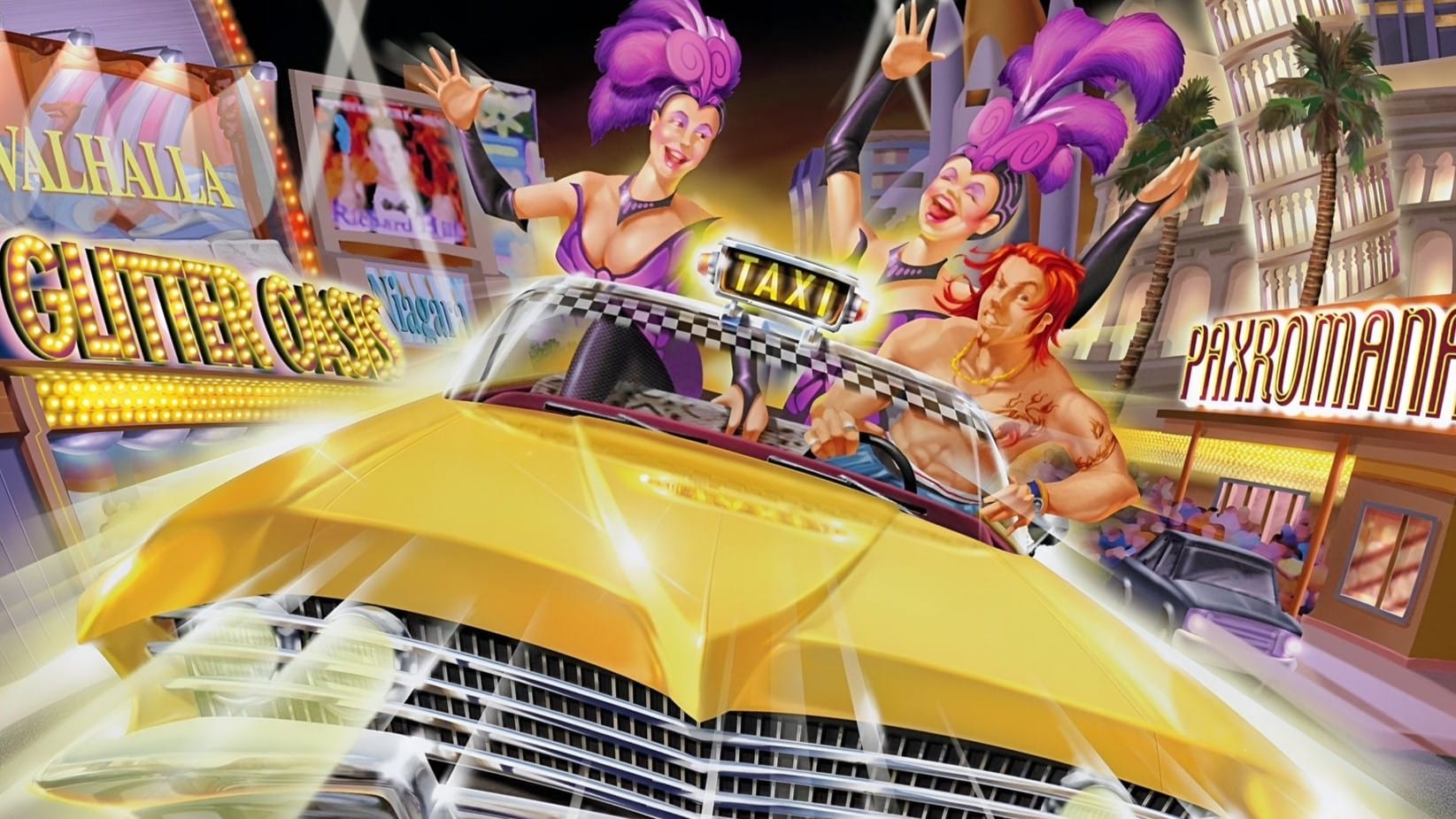
- Developer: Sega
- Release Year: 2004
Set in a neon-drenched Vegas-inspired map called Glitter Oasis, High Roller included updated versions of the original San Francisco and New York maps, now retooled with nighttime settings and tighter traffic. The pace never lets up—and that’s exactly the point. The physics are cartoonish, the pedestrians fearless, and the music? A pure blast of early-2000s punk adrenaline. Whether you’re drifting around corners, launching off ramps, or threading between buses—it’s all about style and speed.
Why It's Worth Playing: While Crazy Taxi 3 didn’t reinvent the wheel, it's the kind of game that doesn’t ask you to think. It dares you to drive like a maniac with a smile on your face and The Offspring blasting in the background. For fans of unfiltered arcade energy, it’s a joyride worth revisiting—just don’t expect to stop at any red lights.
NASCAR Racing 2003 Season
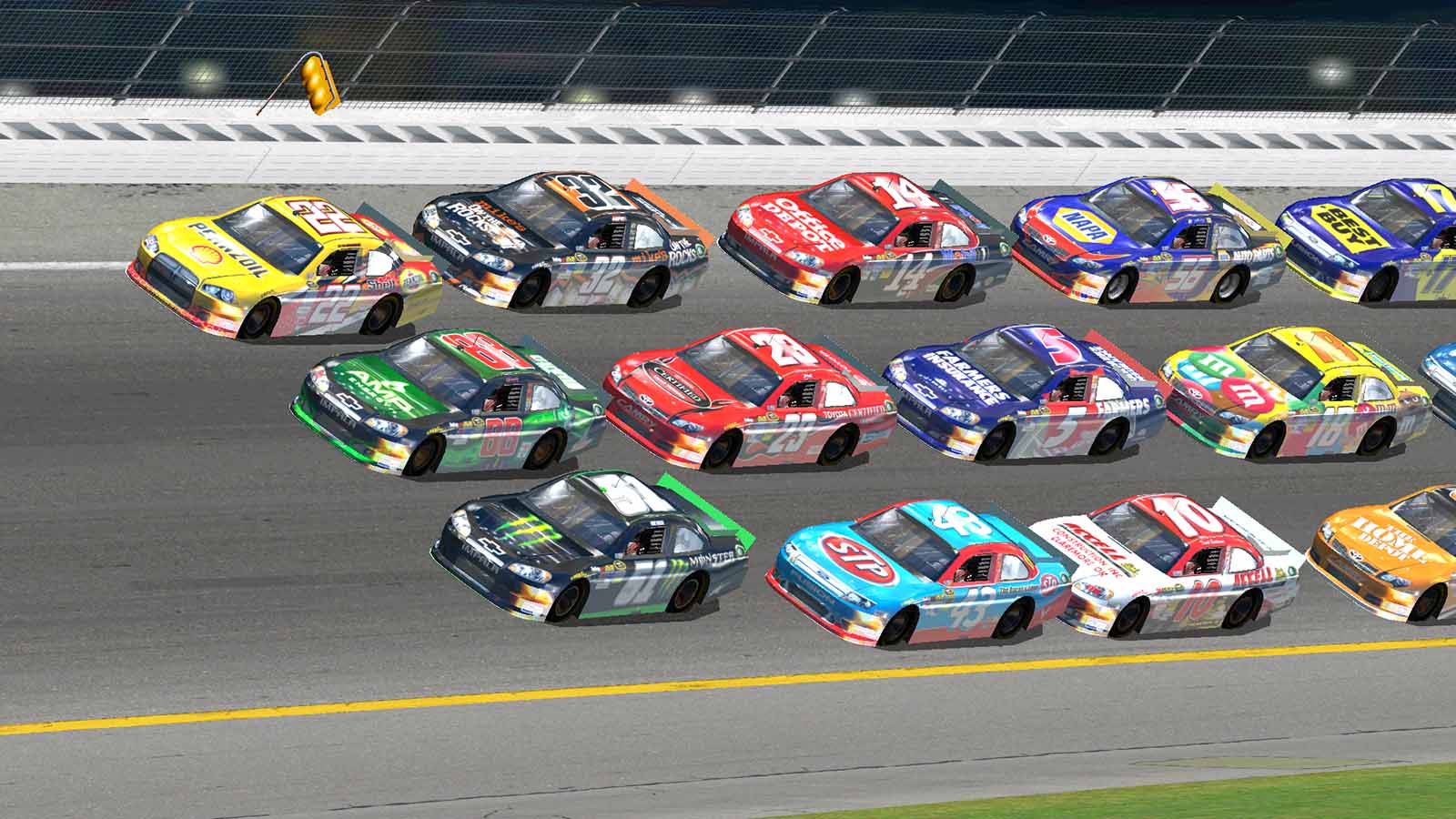
- Developer: Papyrus Design Group
- Release Year: 2003
Everything about NASCAR Racing 2003 Season screamed authenticity. Tire wear, fuel strategy, drafting physics, and car setups were all modeled with obsessive detail. The AI was ruthless and smart, pushing you to race clean lines, time your pit stops, and manage your car like a true crew chief behind the wheel. The game came fully licensed with real drivers, teams, and tracks from the 2003 NASCAR season, giving fans the most complete stock car experience to date.
Why It's Worth Playing: For anyone who ever dreamed of mastering the high banks of Talladega or pulling off a last-lap bump-and-run, NASCAR Racing 2003 Season is still the benchmark—and a must-play chapter in racing game history. Even today, the modding community has added everything from classic liveries, updated rosters to entire new series and tracks—ensuring NR2003 remained fresh for years beyond its release.
Midnight Club 2
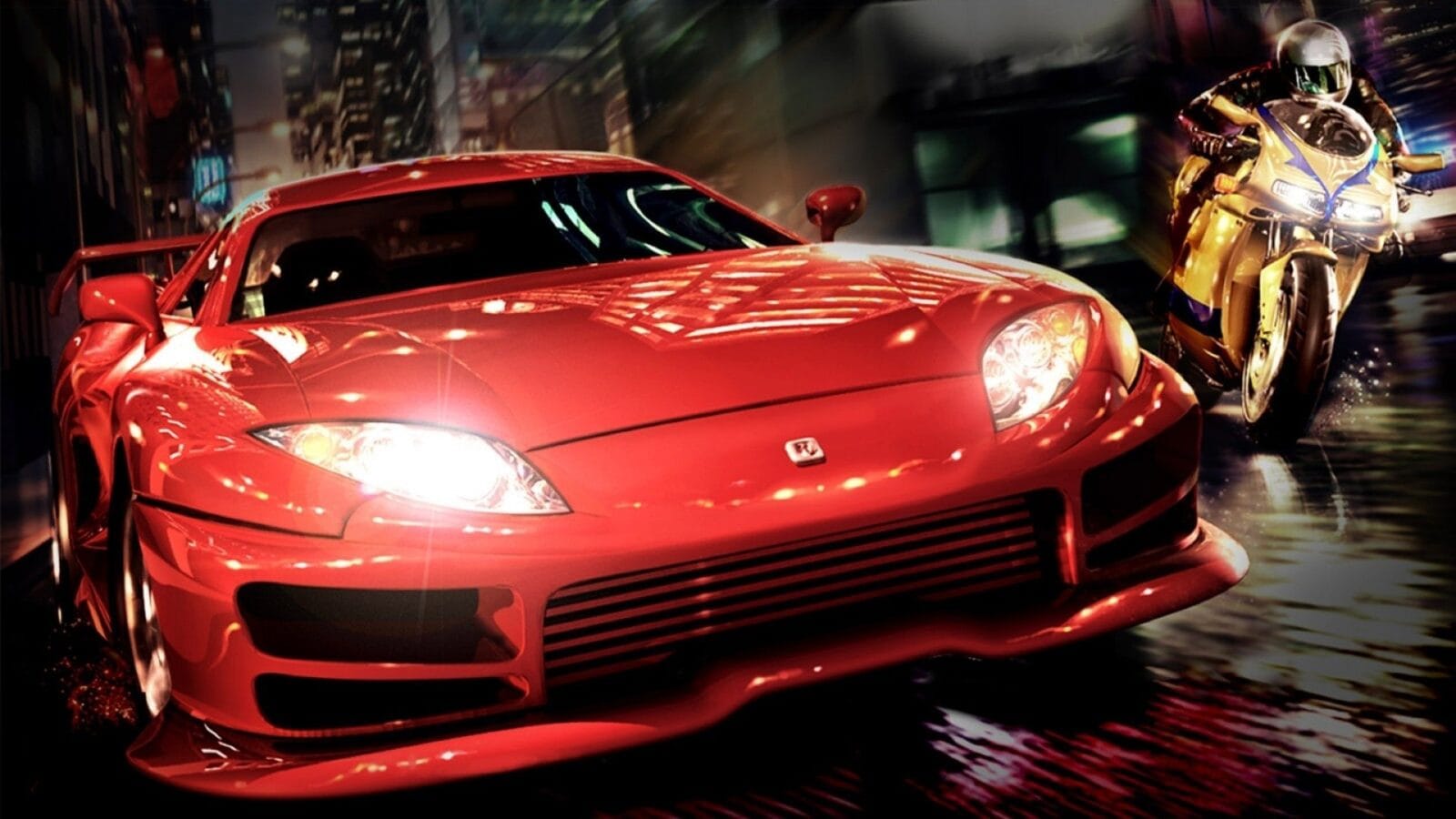
- Developer: Rockstar San Diego
- Release Year: 2003
Midnight Club 2 wasn’t just a racer—it was a vibe. Races weren’t confined to closed circuits—you had to find your own way between checkpoints across sprawling, living cities. But what really made Midnight Club 2 pop was its personality. Every rival had attitude, every car oozed style, and the nitro boosts felt like jet fuel for street rebels. The roster of cars and bikes was diverse and exaggerated, perfectly matching the game’s rule-breaking energy.
Why It's Worth Playing: Long before Forza Horizon gave us festival-flavored freedom, Rockstar Games brought their signature edge to Midnight Club 2, showing players how exhilarating open-world street racing could be. Whether you were threading through Parisian traffic or blasting through L.A. at midnight, MC2 made urban chaos fun And that’s exactly why it’s still remembered as one of the rawest, raddest arcade racers of its time.
The Simpsons: Hit & Run
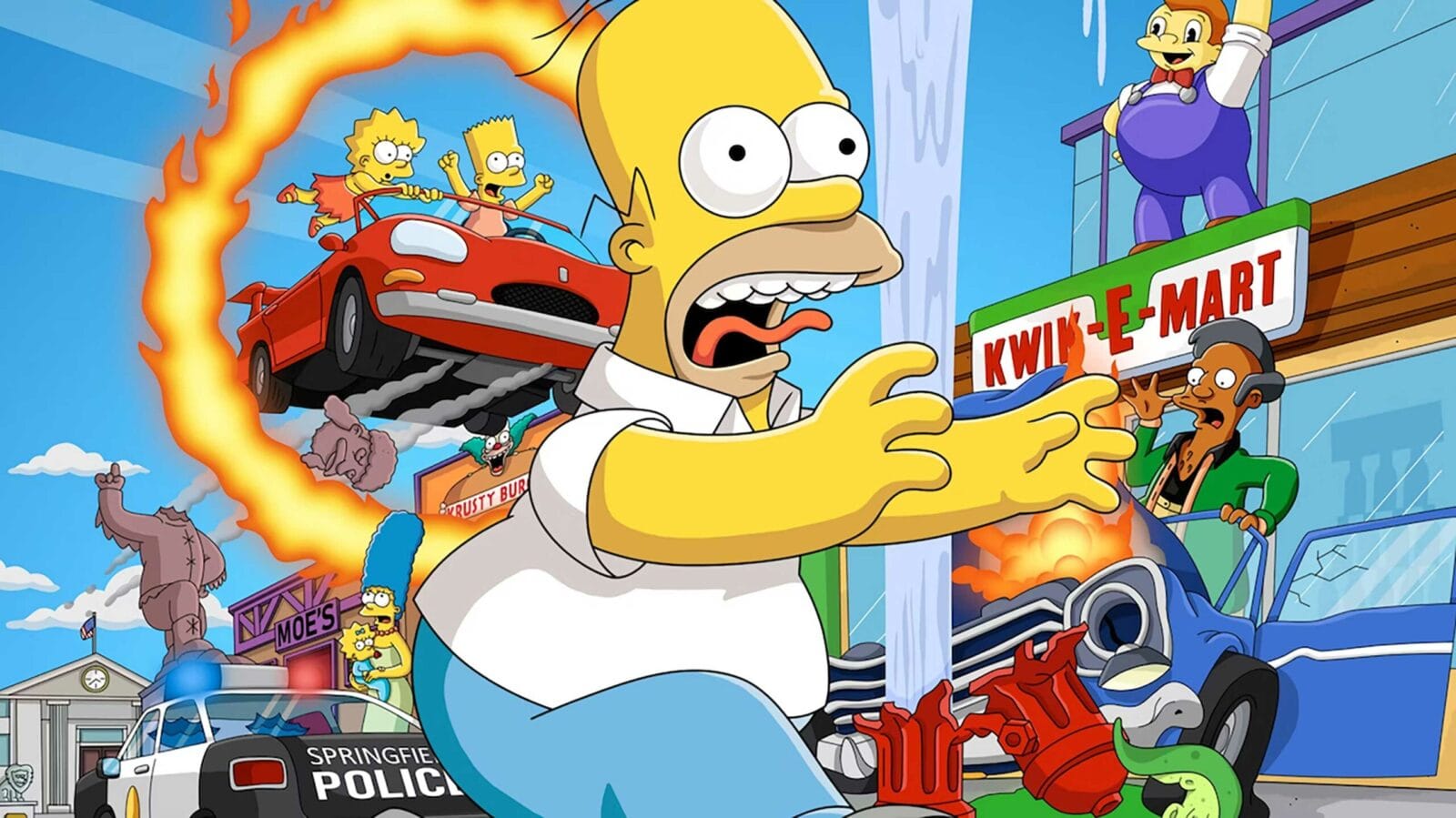
- Developer: Radical Entertainment
- Release Year: 2003
The Simpsons: Hit & Run might not be a traditional racing game, but it earns its spot on this list by turning the streets of Springfield into an open-world demolition derby of cartoon chaos. Each character—whether it was Homer, Bart, Lisa, or Apu—had their own set of hilarious objectives, most of which involved hopping into a vehicle and causing mayhem. From frantic chase sequences to delivery runs and all-out destruction derbies, driving was the beating heart of the experience.
Why It's Worth Playing: What made The Simpsons: Hit & Run work so well was the sheer love poured into every pixel. Springfield was rendered in meticulous, fan-service-filled detail, with familiar landmarks around every corner and voice acting from the show’s original cast keeping things authentic. It's the kind of game that still draws nostalgic grins today—partly for its humor, partly for its sheer replayability, and mostly because it let you do donuts in the Kwik-E-Mart parking lot.
Need For Speed: Underground
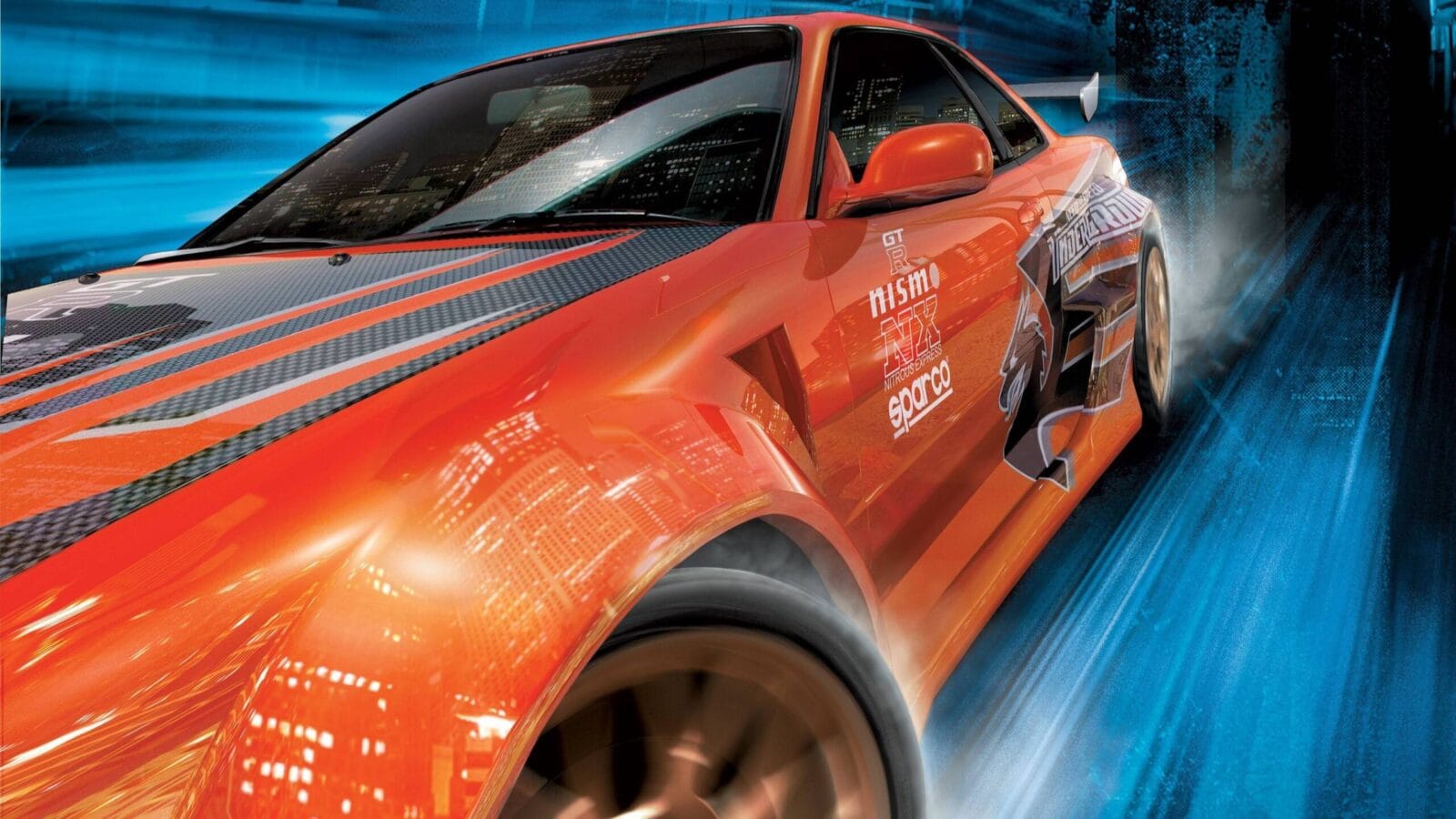
- Developer: EA Black Box
- Release Year: 2003
Need For Speed: Underground nailed the sweet spot between arcade accessibility and satisfying challenge. Drifting around corners, hammering nitrous down neon-lit straights, and weaving through traffic at impossible speeds—it all felt slick and cinematic. But the real hook? Customization. For the first time in the series, players could fully deck out their rides. And with a banging soundtrack featuring the likes of Lil Jon, Fuel, and FC Kahuna, Underground became as much a cultural artifact as it was a game.
Why It's Worth Playing: When Need For Speed: Underground dropped in 2003, it laid the foundation for a new wave of racing titles and helped turn modding culture into mainstream fun. Trading in exotic supercars and scenic highways for import tuners and urban grit, Underground was the game that brought street racing culture into the digital spotlight. For many players, this was their first taste of car culture—and it tasted like burned rubber and bass drops at 2 a.m.
Grand Prix 4
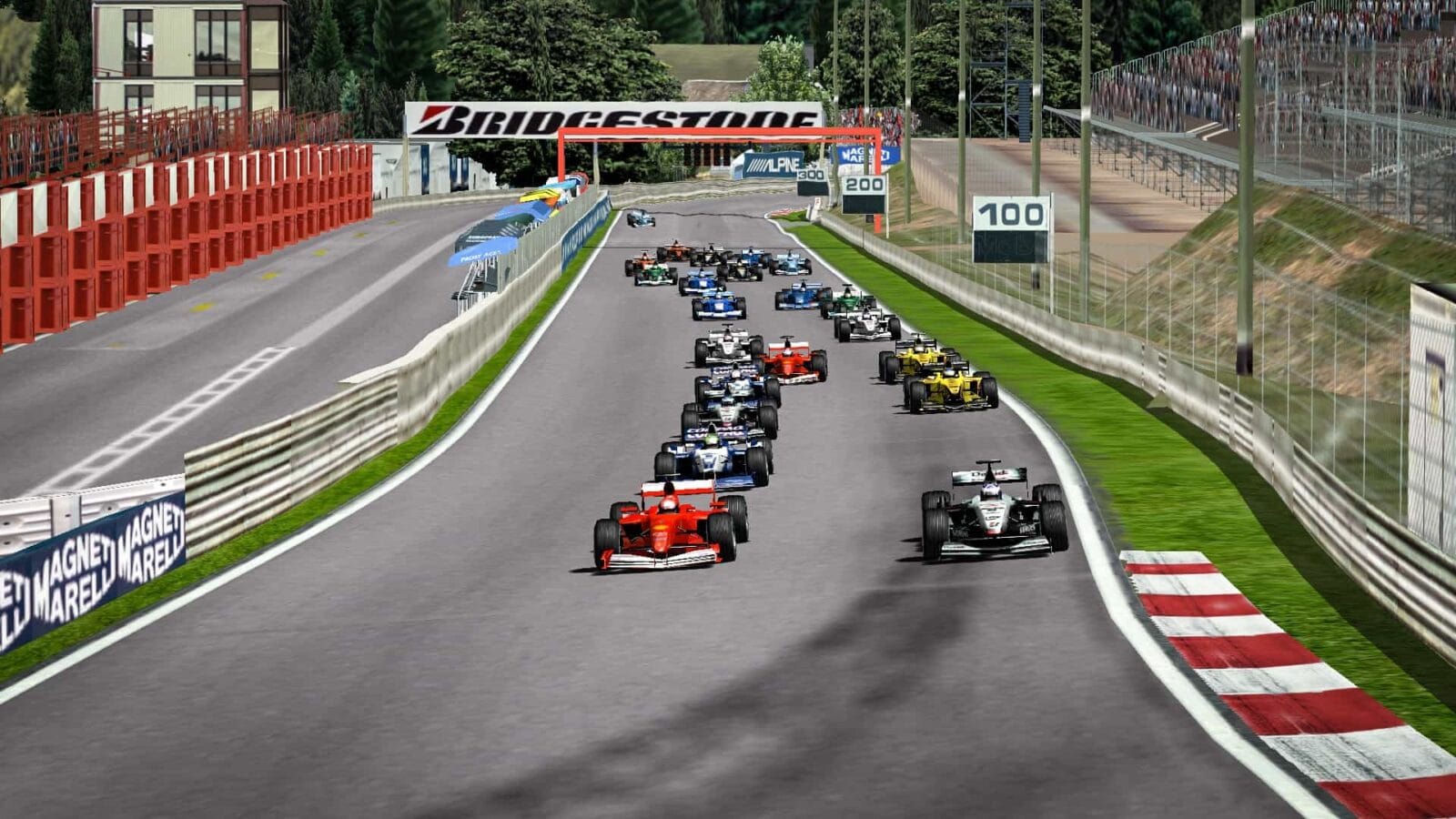
- Developers: Simergy, Infogrames Chippenham
- Release Year: 2002
Featuring the full 2001 Formula One season, Grand Prix 4 offered detailed car models, dynamic weather, realistic tire physics, and one of the most advanced AI systems of its time. Where GP4 really shined was its handling model. Every car demanded respect. You had to learn braking zones, manage tire wear, and feel the balance shift through every chicane and hairpin. Races weren’t won with brute speed—they were earned through consistency and control.
Why It's Worth Playing: Before the era of Codemasters and slick annual releases, there was Grand Prix 4—a game so laser-focused on authenticity that it still stands tall as one of the finest F1 simulations ever made. Even up to today, the game has held on thanks to a loyal community of modders who’ve kept it updated with modern F1 liveries, cars, and circuits. The visuals may show their age, but the simulation underneath is still top-tier.
4×4 Evo 2
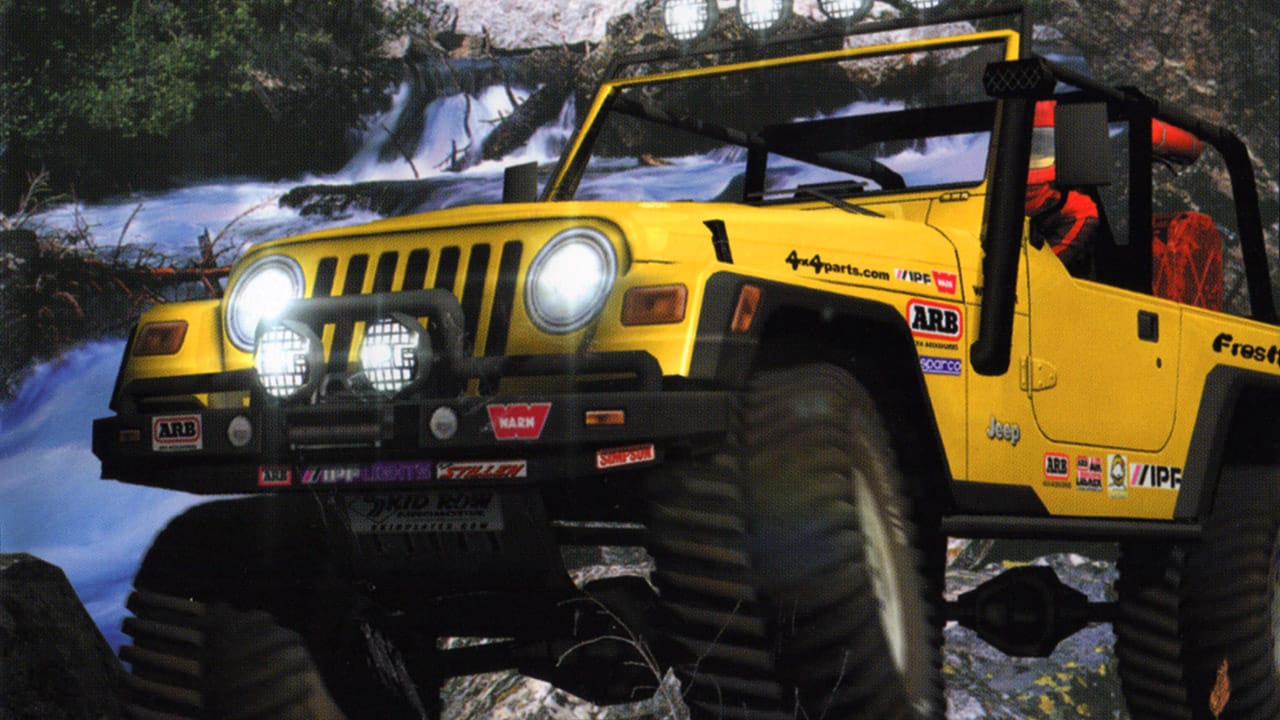
- Developer: Terminal Reality
- Release Year: 2001
4×4 Evo 2 gave players huge, open maps to explore, filled with varied terrain and dynamic weather. From the Yukon’s snowy wilderness to the sun-baked mesas of Arizona, each environment demanded a different approach behind the wheel. Missions added another layer, turning the game into a quasi-adventure title with objectives like locating research stations or hauling cargo through brutal terrain. Players could also modify gear ratios, suspension, tires, and more to build the perfect vehicle for each unique challenge.
Why It's Worth Playing: 4x4 Evo 2 might not have had the polish of later off-road games like Spintires or SnowRunner, but it laid the groundwork. For players who craved freedom, exploration, and getting a little muddy along the way, this was the off-road dream—long before it became trendy.
Lego Racers 2
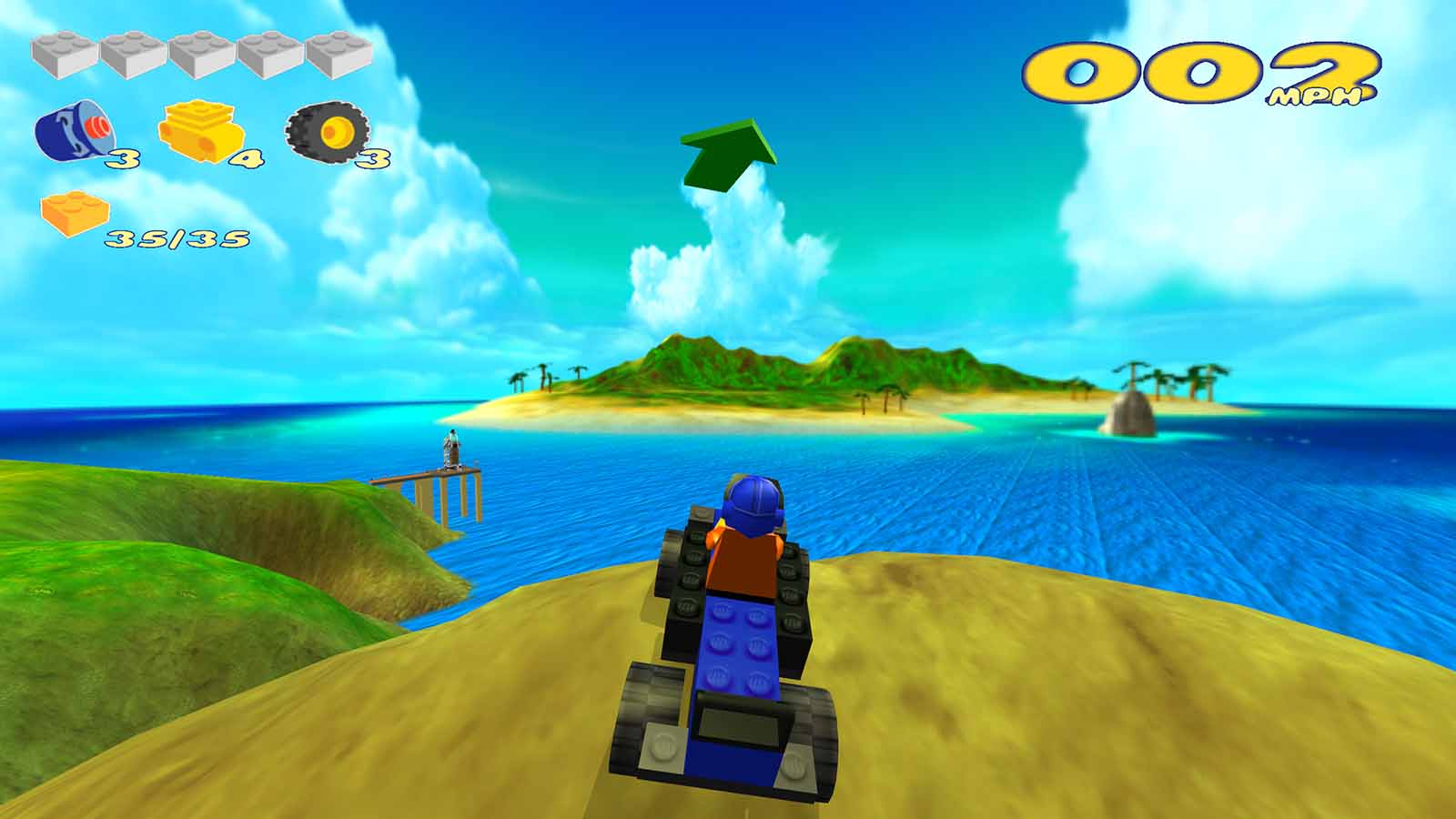
- Developer: Attention to Detail
- Release Year: 2001
Lego Racers 2 took you on a cross-planetary racing tour, from Dino Island’s prehistoric hazards to Mars’ sci-fi circuits. Each world had its own boss, secrets to uncover, and a mini open world to explore between races. The power-ups were wacky, the controls were tight, and the graphics—while chunky—had that unmistakable Lego charm. At the heart of it all was the ability to build your own car and driver. Piece by piece, brick by brick, players could let their imagination run wild before hitting the road against a colorful cast of AI racers.
Why It's Worth Playing: Whether you were chasing gold bricks, dodging lava, or just trying to build the weirdest car imaginable, Lego Racers 2 nailed that marvelous mix of creativity and competition. It’s a game that sticks with you—because deep down, who doesn’t want to build their dream racer and take it for a spin through space?
F1 2001
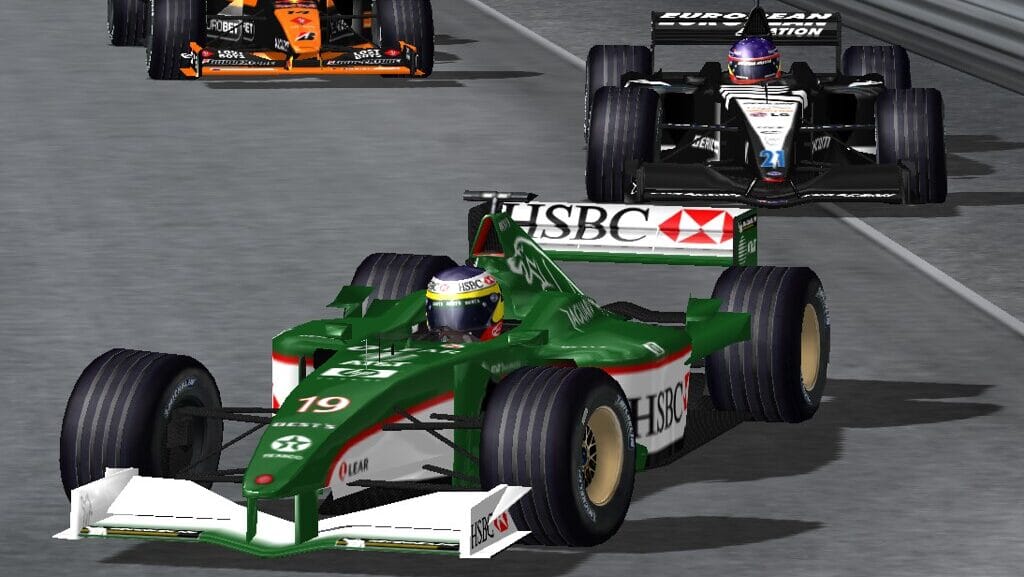
- Developer: Image Space Incorporated
- Release Year: 2001
Built with an enhanced graphics engine and a revamped physics model, F1 2001 was a game that respected the nuances of Formula One without drowning players in complexity. The AI was competent, the cockpit view immersive, and the race-day atmosphere? Spot on. Every pit stop felt tense, every mistake could cost you the race, and every win felt earned. It lacked some of the simulation depth of Grand Prix 4, but in terms of balance and playability, F1 2001 was in a league of its own.
Why It's Worth Playing: Long before Codemasters took the reins of the Formula One license, EA Sports delivered a hidden gem in F1 2001—a game that struck a surprisingly strong balance between accessibility and realism, earning the respect of sim fans and casual racers alike. Often overshadowed by flashier titles, this was EA’s finest hour on the grid, and it still holds up as one of the most immersive depictions of the sport from its era.
Midtown Madness 2
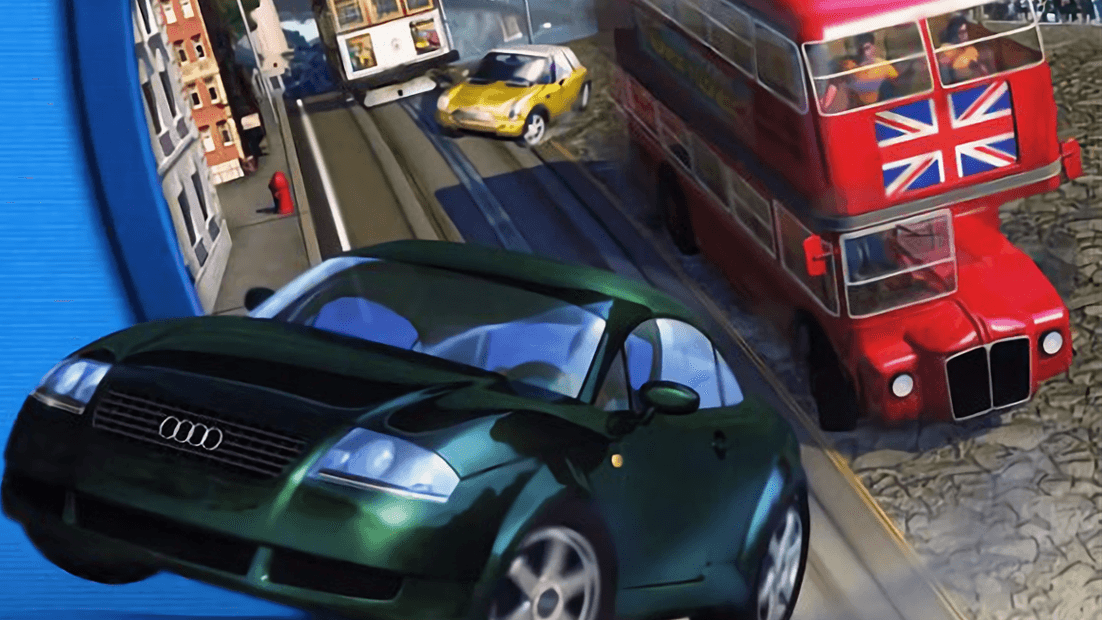
- Developer: Angel Studios
- Release Year: 2000
Set across the steep, sun-soaked streets of San Francisco and the cobblestone alleys of London, Midtown Madness 2 offered an open-world racing experience long before it became the industry standard. You didn’t have to race. You could just drive, explore, go off-road, or pile into oncoming traffic for no other reason than it was fun. Add in solid multiplayer, mod support, and that classic late-’90s Microsoft Game Studios charm, and MM2 became more than a sequel—it became a cult classic. For PC gamers in the early 2000s, it was digital anarchy with a steering wheel.
Why It's Worth Playing: Developed by Angel Studios (who would later become Rockstar San Diego), Midtown Madness 2 took everything great about the first game and doubled down with two massive cities, new modes, and more glorious insanity. Whether you were launching over trolley tracks or drifting past Big Ben, the game made urban playgrounds out of real-world locations—and it never took itself too seriously.
Colin McRae Rally 2.0
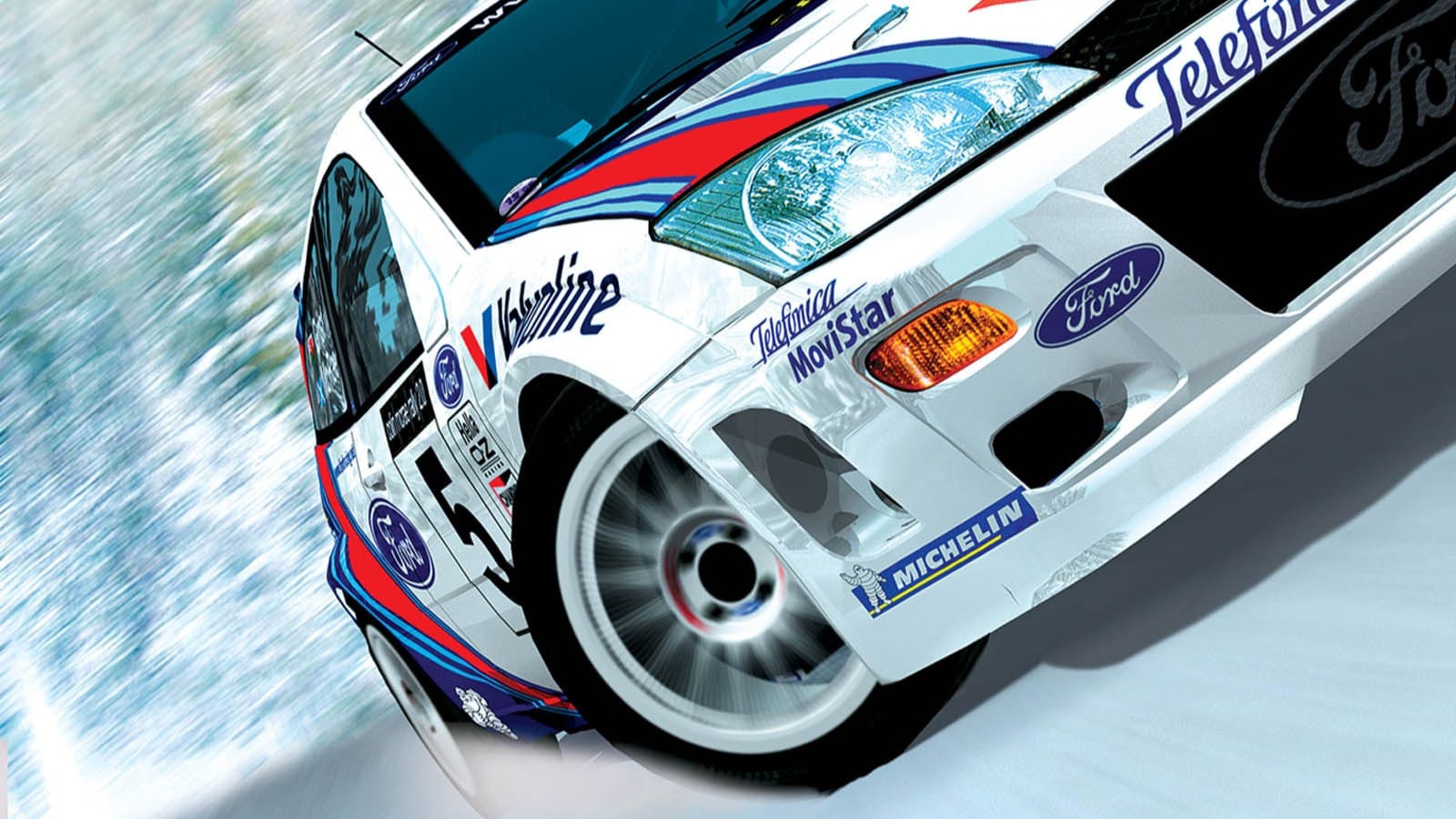
- Developer: Codemasters
- Release Year: 2000
Colin McRae Rally 2.0 was a game that made you feel the terrain. Every bump, puddle, and loose gravel patch wasn’t just cosmetic—it affected your car’s grip, steering, and suspension in real-time. One misjudged turn, one late brake, and you were hugging a tree instead of the podium. But when you nailed a stage? Nothing felt better. Colin McRae Rally 2.0 struck a perfect balance between realism and accessibility. It was tough, yes, but fair. A game that respected your time and skills, and pushed you to master the art of rallying rather than button-mashing your way through the dirt.
Why It's Worth Playing: Before the DiRT series went full-throttle into spectacle, Colin McRae Rally 2.0 was setting the benchmark for pure rally simulation—one hairpin at a time. Even today, rally fans still cite it as one of the greatest ever made—a testament to its focused design and timeless gameplay. If you’ve got the nerves, the reflexes, and a love for sideways driving on slippery surfaces, this one deserves a place back on your virtual podium.
Motocross Madness 2
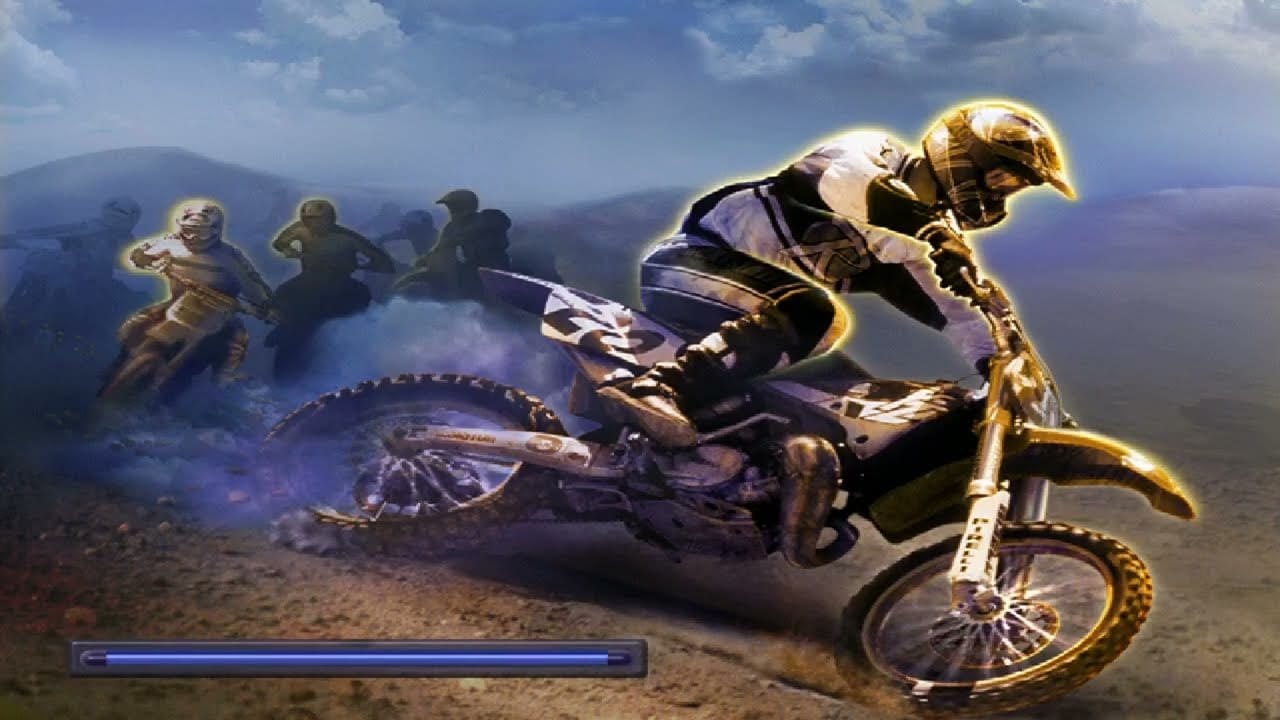
- Developer: Rainbow Studios
- Release Year: 2000
Motocross Madness 2 was a dirt-bike sim that refused to be fenced in. Yes, it had traditional racing modes, but the real charm was in its sprawling free ride zones. Here, you could launch off cliff faces, discover hidden caves, and test the limits of ragdoll physics—all with no timer ticking down your fun. The handling was buttery-smooth, with a surprisingly deep trick system that let you bust out can-cans, nac-nacs, and full-blown backflips. And if you wiped out mid-air? No worries—the game’s exaggerated crashes were half the fun.
Why It's Worth Playing: With vibrant visuals, tight controls, and an infectious sense of fun, it stood out in an era dominated by asphalt racers. For players who preferred jumps to hairpins and dirt to pavement, Motocross Madness 2 wasn’t just a racing game—it was a motocross sandbox, and it was glorious. Whether you were grinding through the pro circuit or just goofing around in the dunes, Motocross Madness 2 had a carefree spirit that made it endlessly replayable.
Need For Speed: Porsche Unleashed
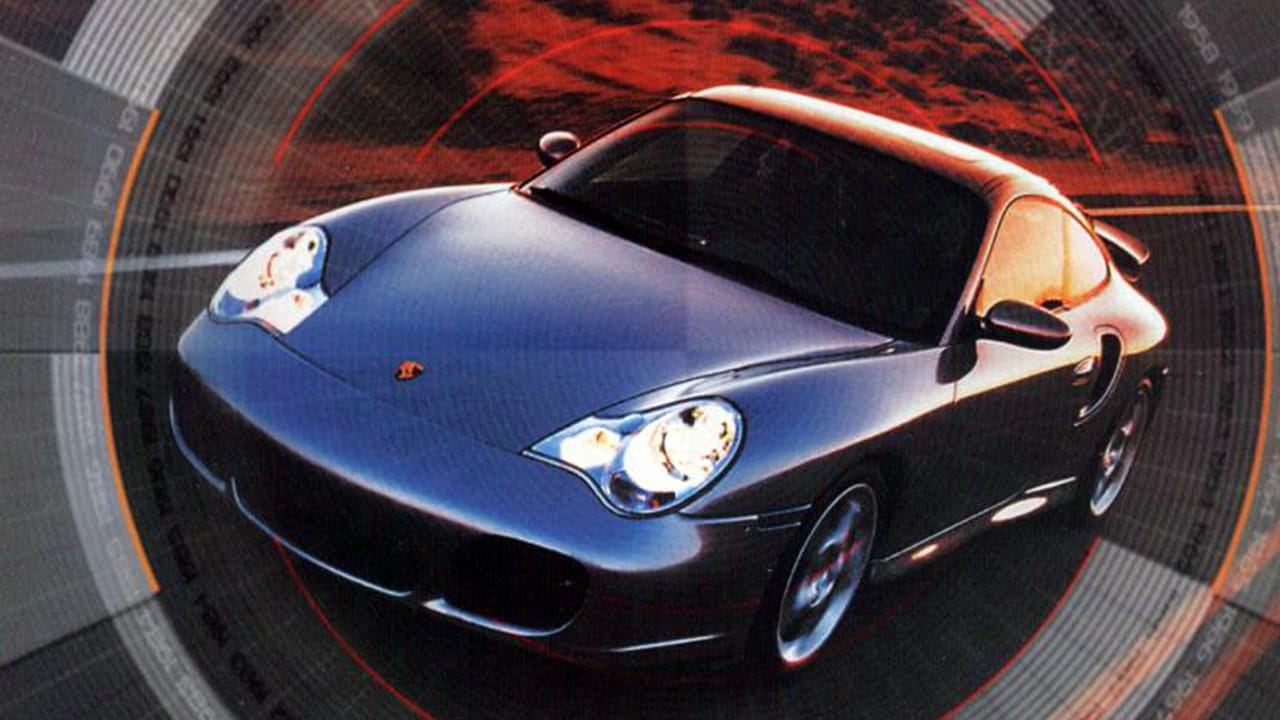
- Developer: EA Canada
- Release Year: 2000
Need For Speed: Porsche Unleashed ditched the usual cops, street races, and exotic car variety for a focused, reverent deep-dive into one of the world’s most iconic automotive brands: Porsche. The game featured two main modes: Evolution and Factory Driver. Evolution guided you through decades of Porsche’s lineage, offering a surprisingly educational (and emotional) journey through design and innovation. Factory Driver, on the other hand, was a challenge mode that tested your skill in increasingly difficult scenarios—perfect for gearheads looking to prove their worth behind the wheel.
Why It's Worth Playing: With tight, technical tracks set in gorgeous European backdrops, and a handling model far more grounded than its NFS siblings, this was a game made for drivers who wanted depth over spectacle. No nitrous, no neon—just pure performance and precision. Need For Speed: Porsche Unleashed wasn’t your typical NFS title—and that’s exactly what made it special.
Midtown Madness
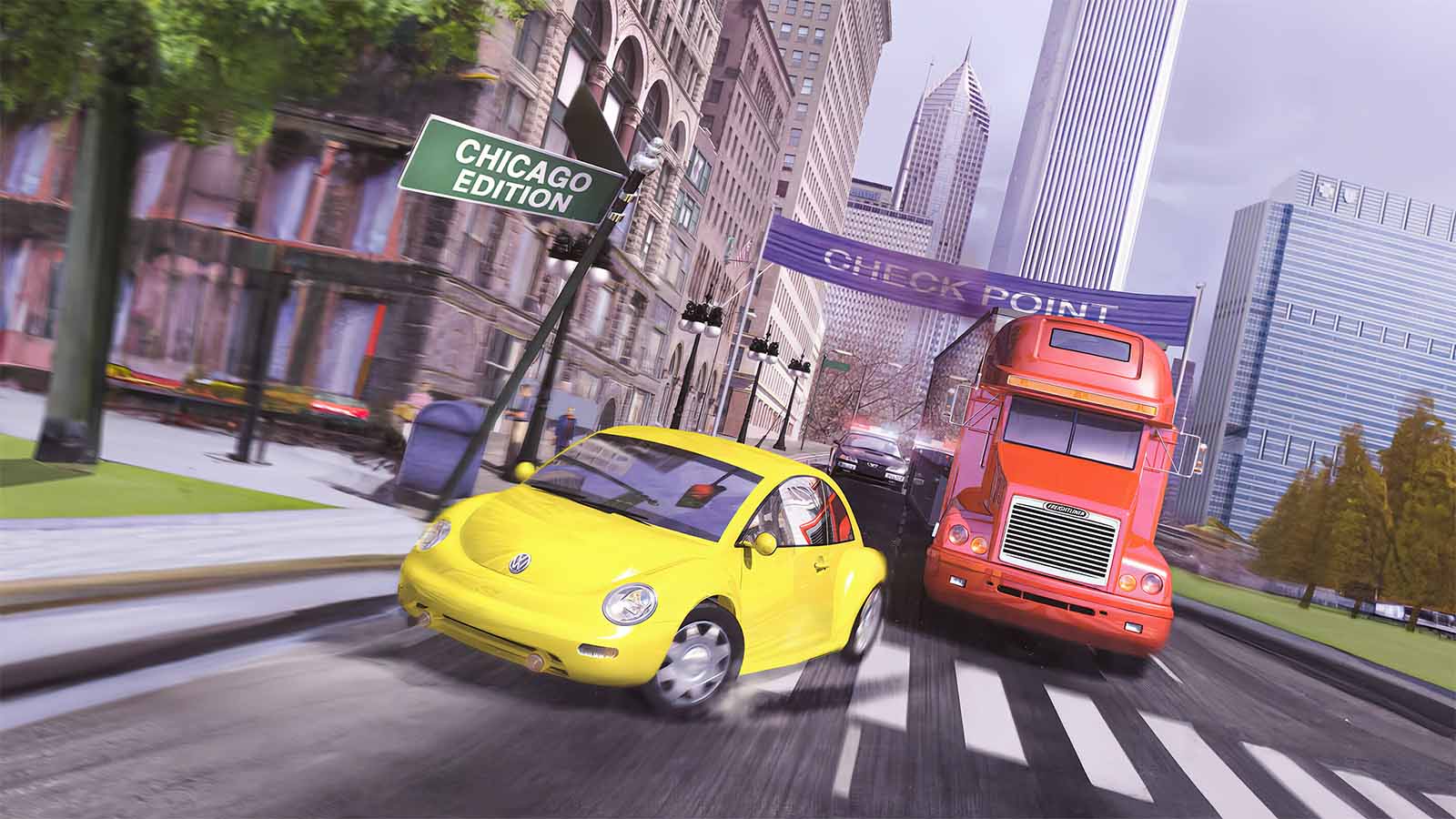
- Developer: Angel Studios
- Release Year: 1999
Midtown Madness featured a solid variety of modes, from traditional races to “Blitz” time trials and Checkpoint challenges. But the real fun was in “Cruise” mode, where you could just roam free, learning every shortcut and stunt-friendly alleyway in a city that felt alive with traffic, pedestrians, and dynamic weather. Want to detour through a park? Go for it. Smash through traffic, crash into storefronts, or try to dodge cops while blasting down Lakeshore Drive—it was all fair game. This was one of the first racers that encouraged exploration and sandbox play, blending arcade physics with semi-realistic urban chaos.
Why It's Worth Playing: Midtown Madness wasn’t just fun—it was groundbreaking. Whether you were barreling through intersections in a Mustang, weaving between buses in a city bus, or bouncing over curbs in a Beetle, Midtown Madness was all about unstructured fun. It paved the way for titles like Burnout Paradise, Test Drive Unlimited, and Forza Horizon, and its influence still echoes through open-world racing games today.
WipEout 2097
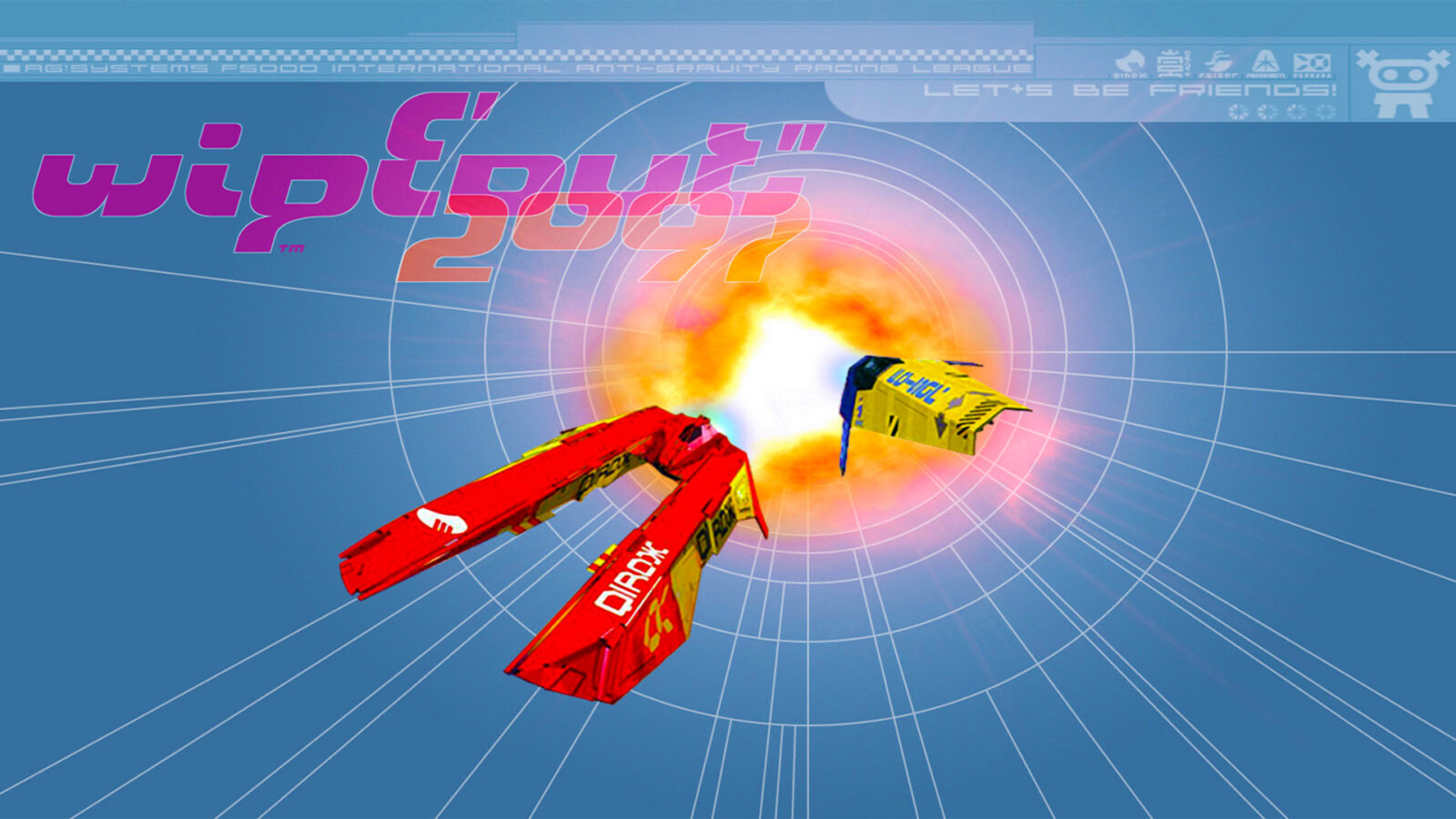
- Developer: Psygnosis
- Release Year: 1997
WipEout 2097 (known as WipEout XL in the US and Japan) wasn’t about cars and tracks. This game was about hovering death machines rocketing at breakneck speeds through futuristic circuits. The visual design, courtesy of The Designers Republic, brought industrial futurism into the mainstream. And we need to talk about that soundtrack: WipEout XL boasted a legendary lineup of techno and big-beat artists like The Prodigy, Fluke, and The Chemical Brothers. WipEout XL was aggressive, stylish, and unapologetically hardcore.
Why It's Worth Playing: WipEout XL took everything great about the original WipEout and sharpened it. The controls were tighter, and the sense of speed was more intense. Fast, fierce, and dripping with cyberpunk cool, it delivered a sensory overload that few racing games before—or since—have matched.
Conclusion
In a world obsessed with ultra-HD graphics, live-service updates, and microtransactions, these abandonware racing games are a refreshing reminder of what made PC gaming special in the first place. They’re scrappy. They’re inventive. And they’ve got more personality in a single race than most modern titles have in their entire runtime.
Each of these games—whether it’s the raw street culture of Underground 2, the polished chaos of Blur, or the nostalgic, open-world joy of Midtown Madness—offers a unique flavor of racing that’s often been lost in today’s hyper-polished simcade hybrids. They may be relics of another era, but they’re not fossils. They’re living, breathing time capsules full of energy, character, and game design that wasn’t afraid to take risks.
The best part? Many of them are just a few clicks away—preserved, shared, and celebrated by passionate communities that refuse to let them fade. Thanks to abandonware archives and fan patches, it’s easier than ever to fire up these classics and relive their glory days.
So go ahead. Boot up Richard Burns Rally and rediscover what “challenge” really means. Cruise through Test Drive Unlimited and remember how liberating a virtual road trip can be. Or just blast through WipEout XL and marvel at how cool the future looked in 1997. Because sometimes, the fastest way forward is shifting in reverse.

